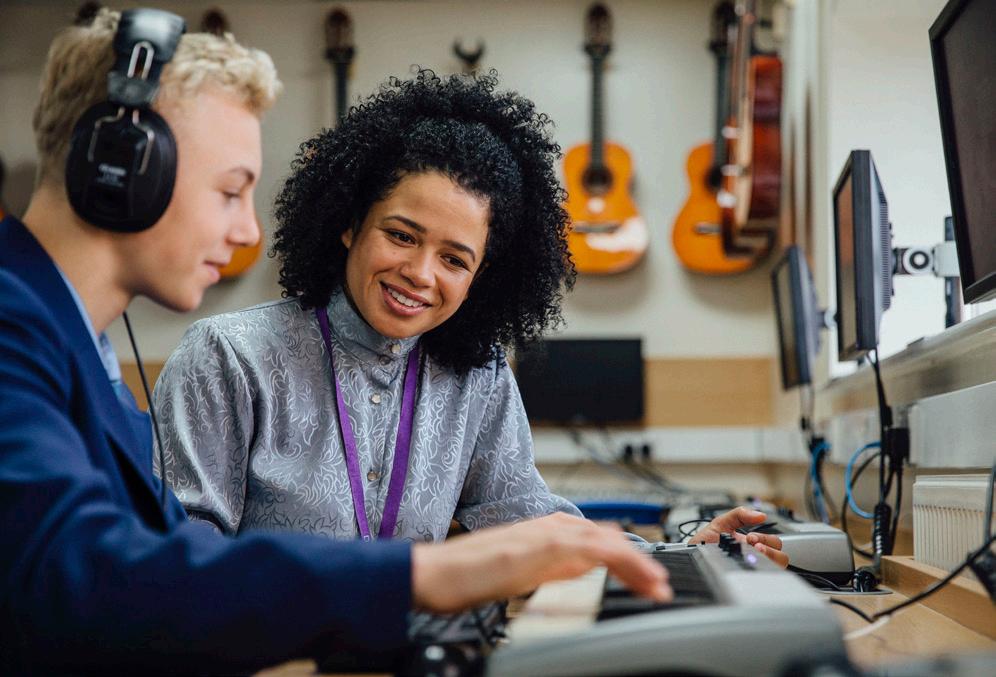










23 Global Music Ed by Dr. Will Copola, CMEA Global Music Education Representative 23 CMEA Advocacay
24 Teaching Band Instrument Repair in the High School Setting Through Career Technical Education by Dan Sedwick
26 Resources for Urban Schools by Claudio Alcantar, CMEA Urban Schools Representative
Jacks, CMEA Rural Schools
30 Building Community in the Elementary Music Classroom by Dr. Jenny Gee, CMEA Elementary Music TK-5/6 Representative
32 The Power of Authenticity: How Being Yourself as a Teacher Enhances Student Success by Dennis Feinland, CMEA Secondary Music 6-12 Representative
34 Retired Members by Rita Zigas-Brown, CMEA Retired Members Representative
35 CMEA Collegiate and Collegiate Council
Business Manager:

42 Hello CMEA Members by Daniel Crispino, CMEA New Teacher Representative
42 Music Technology by Jack Aron, CMEA Music Education Through Technology Representative
43 Fall Arts Supervisors Gathering
42 Diversity Your Repertoire by Becky Stewart, CMEA Diverse Learners Representative

2022-2024 Anne Fennell, San Diego
2020-2022 Armalyn De la O, San Bernadino
2018-2020 John Burn, Cupertino
2016-2018 Scott Hedgecock, Fullerton
2014-2016 Michael D. Stone, Bakersfield
2012-2014 Russ Sperling, San Diego
2010-2012 Norman Dea, Walnut Creek
2008-2010 Jeff Jenkins, Chula Vista
2006-2008 Cheryl Yee Glass, Danville
2004-2006 Rob Klevan, Pacific Grove
2002-2004 Sam Gronseth, Paradise
2000-2002 George DeGraffenreid, Fresno
1998-2000 Dennis L. Johnson, Salinas
1996-1998 Jay D. Zorn, La Crescenta
1994-1996 Don Doyle, Pasadena
1992-1994 Bill Adam, Roseville
1990-1992 Carolynn Lindeman, Greenbrae
1988-1990 L. Leroy Roach, Walnut Creek
1986-1988 John L. Larrieu, Portola
1984-1986 Vivian M. Hofstetter, Bakersfield
1982-1984 David S. Goedecke, Stockton
1980-1982 Charles L. Freebern, San Diego
1978-1980 Henry Avila, Monterey
1976-1978 Mary C. Reed, Elk Grove
1974-1976 Marlow Earle, Lakewood
1972-1974 Louis Nash, La Crescenta
1970-1972 Anthony L. Campagna, Foster City
1968-1970 Judd Chew, Sacramento
1966-1968 Kenneth D. Owens
1964-1966 Keith D. Snyder, Davis
1962-1964 Gibson Walters, San Jose
1960-1962 Douglas Kidd
1957-1960 Joseph W. Landon, Fullerton
1955-1957 Harold Youngberg, Oakland
1953-1955 Fred Ohlendorf, Long Beach
1951-1953 George F. Barr
1949-1951 Elwyn Schwartz
1947-1949 Clarence Heagy, Fresno
2024 - Cathy Olinger, Michael Phenicie
2023 - Norm Dea, John Abigana
2022 - Marlene Mudge
2020 - Stephen Luchs
2019 - Judi Scharnberg, Jeri Webb
2018 - Dr. Lawrence Stoffel, Dean Hickman
2017 - Dr. Edward Harris, Michael Corrigan, James Mazzaferro
2016 - Dr. Robert Halseth, Rosemarie Krovoza, Rick Meyer
2015 - Dale Anderson, Ann Marie Haney, Dr. Thomas Lee
2014 - Jon Christian
2013 - Orrin Cross
2012 - Gayane Korkmazian, 2012; Gerald E. Anderson, 2012;
2011 - David Whitwell
2010 - Nicholas Angiulo, Vincent Gomez
2009 - Kem F. Martinez, Carl W. Schafer, Robert W. Lutt
2008 - Duane Weston
2007 - John Larrieu, Mary Val Marsh, Barbara Cory, Bill Ingram
2006 - Carolynn Lindeman, Joe Foster, Paul Shaghoian
2005 - Frances Benedict, L. Leroy Roach, Silvester McElroy, Jerry Kirkpatrick
2004 - Robert Greenwood, Arthur Huff, Lyle Stubson, Lois Vidt
2003 - John Farr, Thomas Eagan
2002 - Larry Johnson, Mary Louise Reilly
2001 - William Hill, Helynn Manning, Wesley “Colonel” Moore
2000 - Vivian Hoffstetter, F. John Pylman
1999 - Lawrence Sutherland
1998 - Chuck Schroeder
1997 - Dean Semple
1996 - Burl Walter Jr.
1994 - Jerry Moore
1992 - Mike Pappone
1991 - David Goedecke
1987 - Marlowe Earle
1985 - Arthur Dougherty
1983 - William Burke
1981 - Aubrey Penman
1979 - Steve Connolly
1977 - Howard Swan
1975 - Russell Howland
CMEA EXECUTIVE BOARD
CMEA President Chad Zullinger czullinger@calmusiced.com
CMEA President-Elect Holly MacDonell hmacdonell@calmusiced.com
CMEA Vice President Ryan Duckworth rduckworth@calmusiced.com
CMEA Secretary Emelynn Montoya emontoya@calmusiced.com
CMEA Immediate Past President Anne Fennell afennell@calmusiced.com
CMEA OFFICE
cmea@calmusiced.com 2417 North 11th Avenue Hanford, CA 93230 559 904-2002
CMEA Executive Administrator Trish Adams cmea@calmusiced.com 559 904-2002
CMEA Administrative Assistant Heather Adams hadams@calmusiced.com
CMEA Legislative Advocate Martha Zaragoza Diaz lobbyist1.mzd@gmail.com
CMEA Magazine Graphic Designer Dr. Adam Wilke awilke@calmusiced.com
NAfME OFFICERS
NAfME President Deborah Confredo debconfredo@temple.edu 1806 Robert Fulton Drive Reston, VA 22091 800 336-3768
NAfME Western Division President Mike Stone stonem@bcsd.com
SECTION PRESIDENTS
CMEA Bay Section President Craig Bryant Craig@cmeabaysection.orgg
CMEA Capitol Section President Christopher J. Tootle president.cmeacs@gmail.com
CMEA Central Section President Elisha Wells elisha.wells@fresnocitycollege.edu
CMEA Central Coast Section President Barry Capiaux barry_capiaux@nmcusd.org
CMEA North Coast Section President Katri Pitts kpitts@cuttensd.org
CMEA Northern Section President Dr. Jane Brown jbrown@pcoe.k12.ca.us
CMEA Southeastern Section President Dr. David Betancourt dbetancourt@cerritos.edu
CMEA Southern Border Section President Emma Schopler emmaschopler@gmail.com
CMEA Southwestern Section President Dr. Tamara Thies
Tamara.Thies@csulb.edu
COUNCIL OF REPRESENTATIVES
CMEA CAJ Representative Tina Raymond tinaraymond@tinaraymond.com
CMEA CBDA Representative Dan Bryan dbryan1109@gmail.com
CMEA CCDA Representative Dr. Arlie Langager arlie.langager@gmail.com
CMEA CCDA Choral Leadership Academy Coordinator Dr. Cari Earnhart cearnhart@csufresno.edu
CMEA CODA Representative Tiffany Ou-Ponticelli touponticelli@pausd.org
CMEA Advocacy Day Performance Coordinator John Brasier jbrashie@egusd.net
CMEA Advocacy Representative Armalyn De La O adelao@calmusiced.com
CMEA CASMEC Coordinator Will Melendez itswillmelendez@gmail.com
CMEA Collegiate Council Advisor Representative Dr. Michelle McConkey mmcconkey@csuchico.edu
CMEA Creating and Composition Representative Dr. Megan Foley mfoley@polytechnic.org
CMEA CTA Liason TBA
CMEA DEIA Representatives Adam Green adam.green@ousd.org
CMEA Diverse Learners Representative Becky Stewart rstewart@mjusd.k12.ca.us
CMEA Elementary Music TK-5/6 Representative Dr. Jenny Gee jlgee@sdsu.edu
CMEA Global Music Education Representative Dr. Will Coppola wcoppola@usc.edu
CMEA Higher Ed and Research Representative Dr. Karen Koner kkoner@sdsu.edu
CMEA Higher Ed Music Education Representative Dr. Tamara Thies tamara.thies@csulb.edu
CMEA Mentorship Program Chairperson Nora Hunter NHunter@chicousd.org
CMEA Music Supervisors Representative Anthony Dahl adahl@musd.net
CMEA Music Education through Technology Representative Jack Aaron jaron96@gmail.com
CMEA New Teacher Representative (5 or less years) Daniel Crispino dcrispino@rbhsd.org
CMEA Retired Members Representative Rita Zigas-Brown rzigas.brown@gmail.com
CMEA Rural Schools Representative Jeremiah Jacks jeromejacks30@gmail.com
CMEA Secondary Music 6-12 Representative Dennis Feinland dcffeinland@gmail.com
CMEA Social Media Representative Nico Salum nicolosalum@gmail.com
CMEA Tri-M Representative Cassandra Moulton-Rizzo cmoulton@nohum.k12.ca.us
CMEA Urban Schools Representative Claudio Alcantar claudioalcantar@sbcglobal.net
CMEA State Band and Orchestra Festival Coordinator John Burn jburn@calmusiced.com
CMEA State Choral Festival Coordinator Kenneth Haro Kenneth.Haro@svusd.org
CMEA State Solo and Ensemble Festival Coordinator (North) Kari Estrada kaestrada89@gmail.com
CMEA State Solo and Ensemble Festival Coordinator (South) Dr. David Betancourt dbetancourt@cerritos.edu
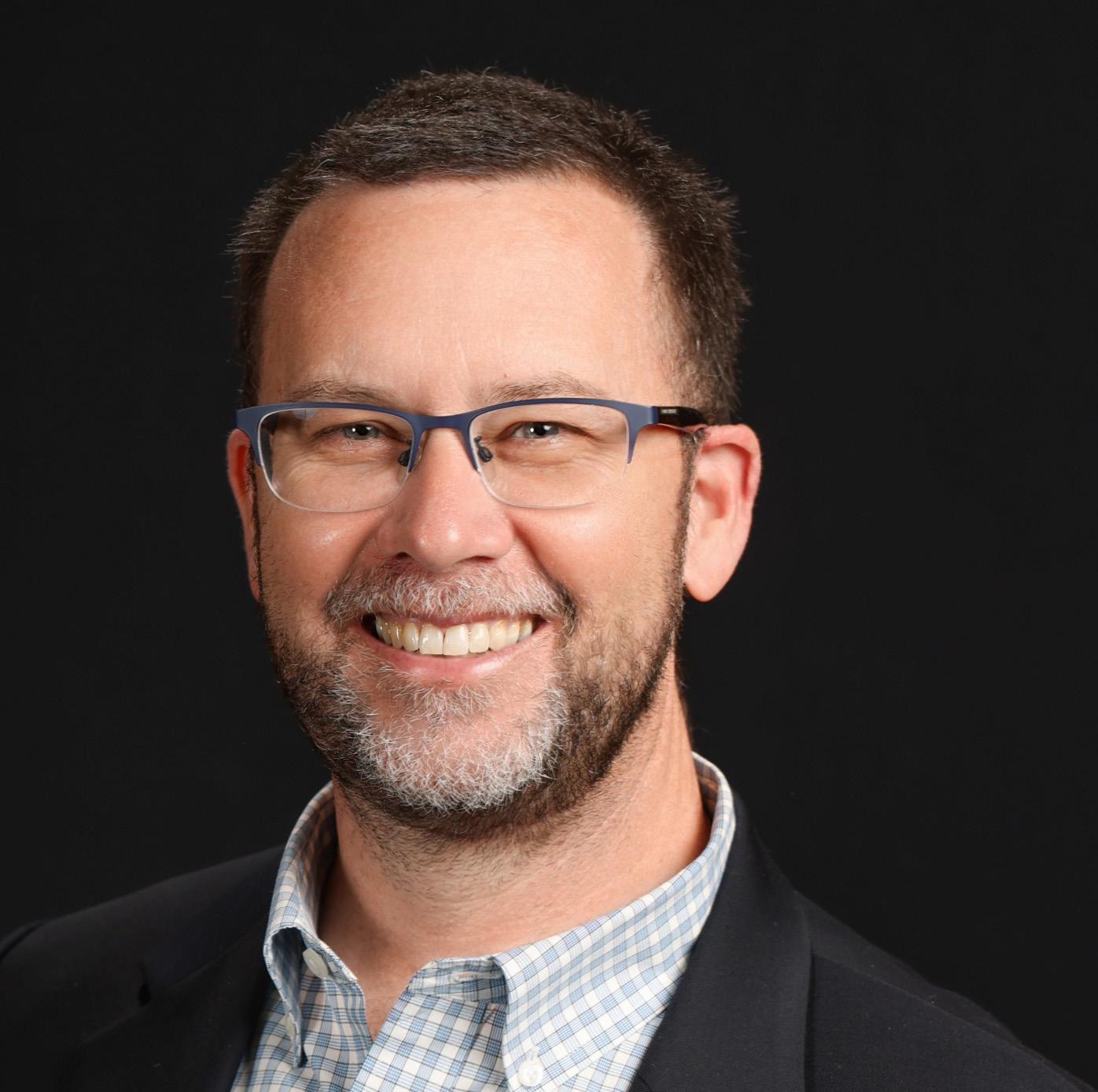

by Chad Zullinger, CMEA President
I hope you’ve all had a chance to settle into the school year and reconnect with your students. I know you’re busy preparing for concerts and engaging in the many experiences that come with the start of a new academic year. The CMEA Section presidents have been busy working in their sections, and our Executive board has been traveling to CMEA section fall in-service conferences throughout the state since our summer Board of Directors meeting in August. Our intention is to share with membership, in their sections, face-to-face, the opportunities, challenges, and celebrate the things we do well as an organization. It has been a pleasure to meet and have conversations with you about the strengths and areas for growth in CMEA.
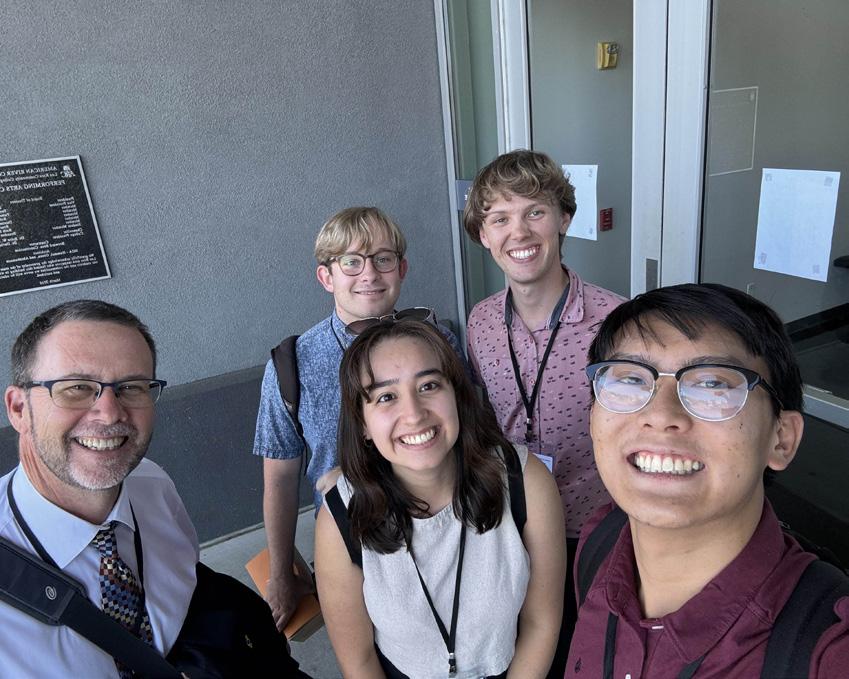
As for me, I’m beginning my second year at Sacramento State University, and like many of you, I’m still navigating the ins and outs of my new job. I feel incredibly fortunate to work with preservice music teachers as they prepare for careers in music education in the classes I’m teaching and various committee work in the School of Music and the College of Education. With the application for the credential program approaching this fall, I’ve been meeting with students to discuss their short-term goals and help them choose the best path for student teaching and internships as they transition into their post-graduate teaching experiences.
Some of the opportunities I enjoy most come from the connections our Music Education program in the School of Music has made with the districts, schools, and music teachers in the region Sacramento State serves. In August, we hosted the West Music California Road Show on campus, bringing nearly 40 local and regional music educators together for a day of fun, engaging, and community-based professional development. Immediate Past President, Anne Fennell, helped facilitate this and several other sites along the roadshow across the state!
Sarah Brown, Elementary Music Lead Teacher in the San Juan Unified School District, graciously supplied an Orff instrumentarium for workshop participants to use during the day. Building connections that strengthen a community of both preservice and inservice music educators is essential for bringing the profession together to achieve more than we could individually. It is a real joy to serve CMEA in this way!
My portion in the Fall magazine is guided by my ideas and curiosity for the strength and well-being of CMEA: how do we make and sustain connections throughout all 9 CMEA state Sections, Council of Representatives, Collegiates, and the Executive Board? I organized these ideas by identifying 3 Opportunities, 2 Challenges, and 1 Exemplar for the organization (you can view at this link). The first layer in this process was initiated and completed by Immediate PastPresident Anne Fennell during her presidency with the organizing and development of our 2023-2027 CMEA Strategic Plan with the Board of Directors. Out of this process, the Board of Directors identified 4 Priority Areas:
1. Leadership
2. Diversity, Equity, Inclusion, and Access (DEIA) in Music Education
3. Communication and Collaboration
4. Advocacy
Please take a moment to view our Strategic Plan that will guide our work through 2027.


The task I was faced with at the onset of my presidency, “How do we activate the Strategic Plan?” As a result of my experience at the NAfME Assembly last June and learning more about the Music Teacher Profession Initiative (MTPI) from a national perspective, I discovered connections from the opportunities and challenges for CMEA I identified with the Priority Areas with the Goals of the Strategic Plan (click here). At our August Board of Directors meeting, I asked each of the section presidents to consider what opportunities, challenges, and exemplar they might identify for their sections. In this sense, all of us take part in the process of activating the Strategic Plan by the connections we create throughout the 9 sections in our individual and collective opportunities and challenges… together
The CMEA Executive Board and I have had the opportunity to attend several Fall In-service conferences in your sections throughout the state this fall. This has been a wonderful opportunity for me to share with membership the work that’s being done on behalf of the organization at the executive board. Also, we get a chance to meet and listen to membership in the sections, and bring your thoughts and ideas back to our board meetings as items to address. Our regional conferences have provided valuable opportunities to both share updates from the executive board and gather feedback from members across the state, ensuring their voices are heard and represented in our ongoing efforts.


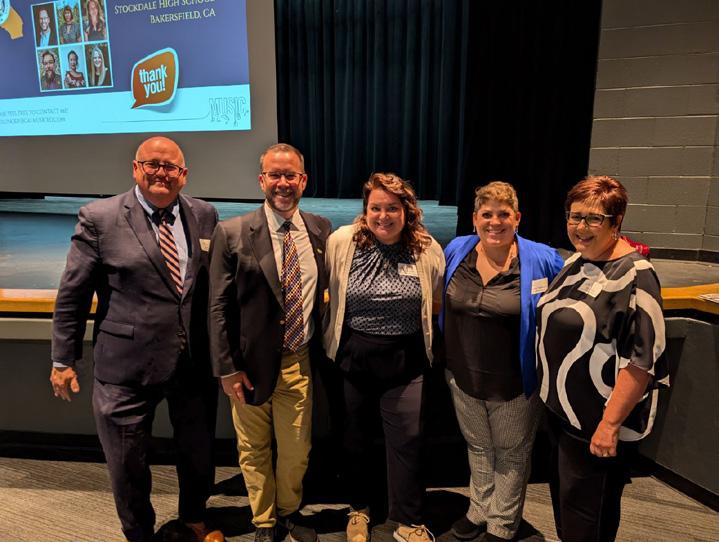
I’m looking forward to meeting with you all at several more In-service conferences this fall. In addition, all of us are excited to see each other at CASMEC in January 2025! The professional development CMEA sessions have all been selected for CASMEC and we think membership is going to find them engaging, relevant, and pertinent for our work as music educators in California! I hope that as your fall semester moves forward, you experience joy and inspiration in the classrooms and rehearsals with your students, knowing the work we do has a lasting impact. Wishing you all a rewarding and successful fall, and I can’t wait to reconnect with you at CASMEC in January!
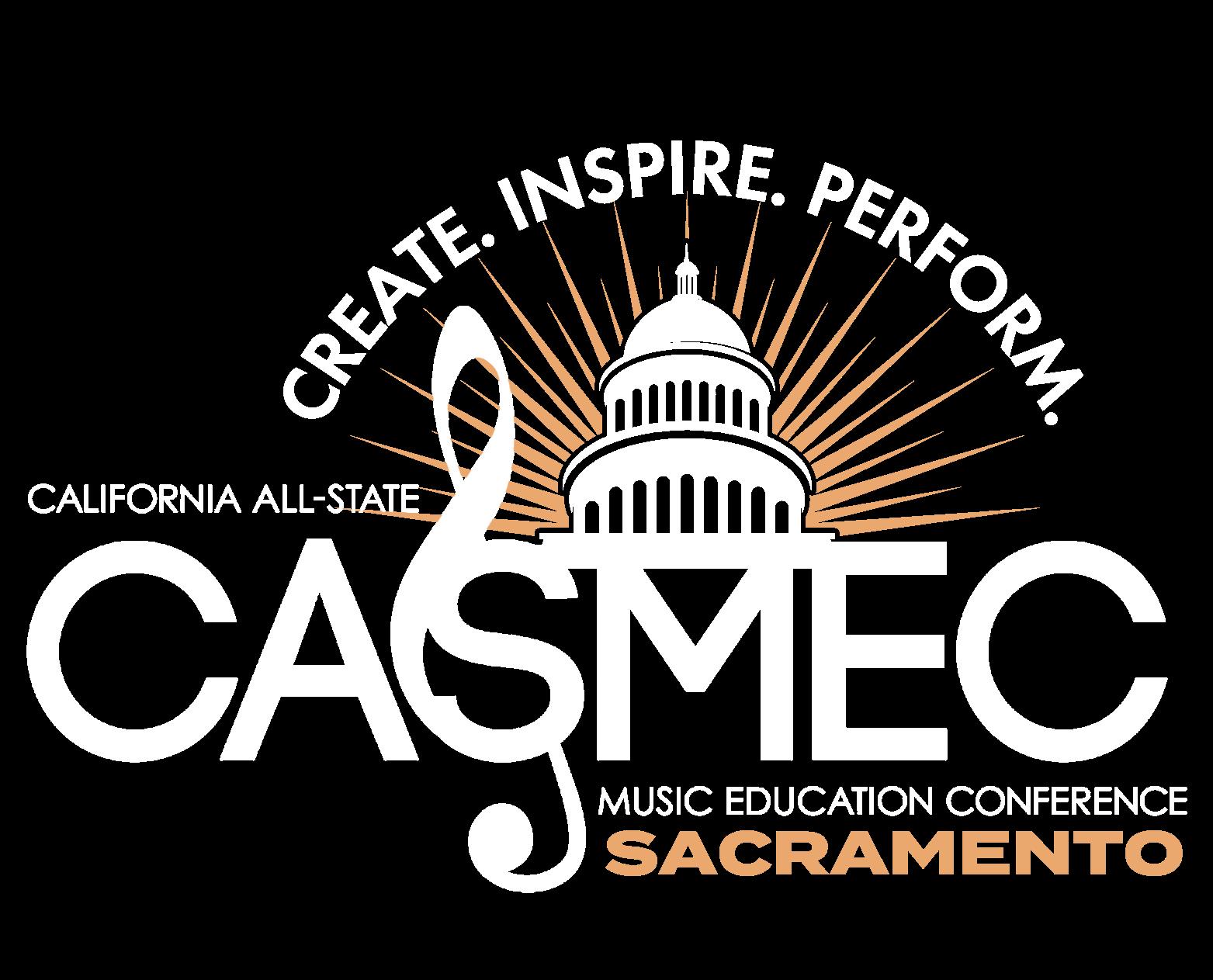
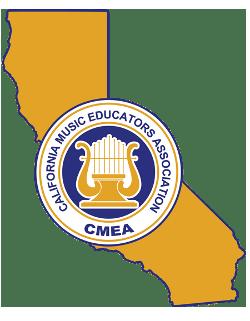

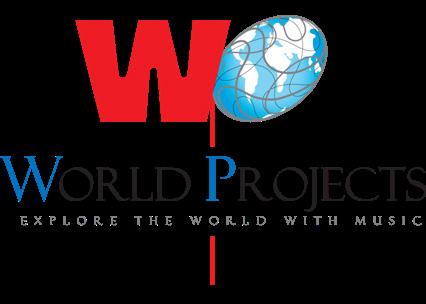


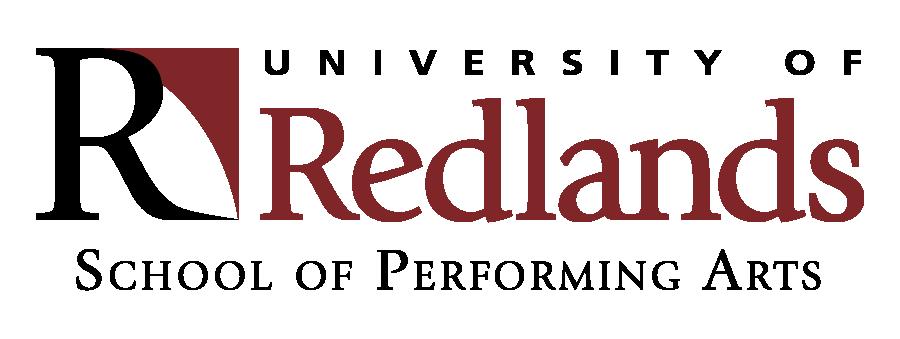


• Website listing with logo and web link on corporate sponsorship page of website
• Exclusive Gold Partner access to CMEA direct sponsored email pricing+
• Company name designation with URL link in each CMEA Magazine
• 25% discount on all CMEA Magazine Advertising
• Company name and link as gold sponsor on CMEA state festival programs
+see sponsored email marketing options below
• Company name designation with URL link in each CMEA Magazine
• 15% discount on all CMEA Magazine Advertising
• Website listing with web link on corporate sponsorship page of website
• Company name and link as silver sponsor on CMEA state festival programs
• Company name designation with URL link in each CMEA Magazine
• Website listing with web link on corporate sponsorship page of website
• Company name and link as bronze sponsor on CMEA state festival programs
Reach your customers directly! As a Gold Corporate Partner, you can now have exclusive access to our members through CMEA sponsored emails. Each month, CMEA will send up to two (2) sponsored emails on behalf of our Gold Corporate Partners. Corporate Partners may submit content and formatting to CMEA, who will distribute your email to the members of your choice. Contact a staff member today for more information. Availability is limited. All email content is subject to approval by CMEA. Rates excluded from discounts.
We will send a promotional email to our membership on your behalf. Sponsored emails are only available for our Gold-level Corporate partners. Pricing below is for Gold-level Corporate members; all others will need to factor in the price of a Gold partnership also.
Pricing per Email (March - October)
• One (1) email to all Full Active Members: $350
• One (1) email to any segment (i.e. band, choral, orchestra, elementary): $250
Pricing per Email (November - February)
• One (1) email to all Full Active Members: $500
• One (1) email to any segment (i.e. band, choral, orchestra, elementary): $350

By John Brashier
CMEA Advocacy Day Performance Coordinator
In April, our four State arts education organizations joined forces once again to celebrate Arts Education Advocacy Day in California. We enjoyed the live presentations and performances of all four disciplines in the State of California: Visual Art, Dance, Music and Theatre. We are excited to bring back representatives from all of the Arts, including K-12, as well as higher education and community members in 2025. Our planned date of April 10th will prove to be another energizing day of celebration, as we gather together and spread the word far and wide.
Arts Education Advocacy Day will consist of live presentations and performances combined with addresses, Q&A’s, and indepth meetings in chambers with our arts leadership for the four disciplines and our participating legislators in the State Capitol. We will be performing outdoors, on the West Steps of the State Capitol. We couldn’t ask for a more “front and center” venue for this grand event!
Please consider this an all call for interested ensembles to participate in this fantastic vehicle to bring our arts programs to the fore. Those of us near the Capitol have an opportunity to represent all of the exemplary teaching going on across our great State. Please consider submitting your interest today. No school is too small, or too large, too old or too new, or too anything. Our planners’ goal is to draw a deep slice from our diverse communities and programs, which bring the beauty of our arts to a younger generation. We would love to present world percussion, Orff performances,
and mariachi groups, in addition to our vocal and instrumental ensembles. We are looking for all groups to meet the highest performance standards, so not all groups will be accepted, but please do send us the latest examples of your groups’ work.
You can submit your offer to participate by filling out the Google form linked here: https://forms.gle/jY6LhPbBuqoKbZyM8
We are looking forward to hearing from you!

In traditional music education classrooms, access to a wide range of musical instruments can be limited due to budget constraints and space limitations. Integrating laptops as instruments in music education classrooms can revolutionize the learning experience, offering students additional entry points to music education, widening their understanding of musicality, and expanding their access to musical exploration. This article will explore the benefits of incorporating laptops as musical instruments in music education classrooms, providing students with more diverse opportunities to engage with music.
Traditional music education often revolves around classical instruments like pianos, violins, or trumpets. However, some students may not feel an immediate connection or interest in these instruments, hindering their engagement in music education. By introducing laptops as instruments, educators can tap into students’ familiarity with technology, bridging the gap between their interests and music learning. This helps with student motivation and retention, and allows students to thrive in the music classroom who may have otherwise struggled to find their musicality.
With laptops, students can explore a range of production concepts and techniques that often don’t exist in the traditional classroom. This facilitates student learning within fields of music creation that are popular in the world today. Laptops also offer a vast array of digital music software, synthesizers, and digital audio
workstations (DAWs) that empower students to experiment with various music genres and styles, and explore various roles within music creation. This inclusivity fosters an environment where students of diverse backgrounds can express themselves through music, encouraging creativity and promoting cultural diversity within the classroom.
Limited physical space in music classrooms often restricts the availability of multiple traditional instruments. This can create a competitive atmosphere, where only a few students get to practice with specific instruments while others are left to explore alternatives with less enthusiasm. Integrating laptops as instruments allows educators to provide a virtually unlimited range of sounds, effects, and instruments, fostering a more inclusive and flexible learning environment.
Students often arrive in the classroom with some familiarity with laptop technology. Laptops as instruments allow students to engage with music using a tool that bridges the gap between familiar and unfamiliar. This may ease the learning process for some students that might otherwise struggle to adapt to the music classroom.
With laptops, students can access a wide variety of virtual instruments, from classical pianos to electronic synthesizers, percussions, and even unique experimental sounds. This flexibility encourages students to explore and experiment, nurturing a sense of ownership and agency in their musical journey. This flexibility and
range also serves as a menu that introduces students to a variety of musical concepts, all within the same tool.
Performance and traditional composition activities often dominate the music classroom. However, digital composition and music production techniques are often a large part of music making in the modern world. Laptops give students access to this form of authentic musical performance, and better prepares them for the range of musical activities present in today’s market.
Every student has unique learning preferences and abilities. Traditional music education might not cater to all students’ needs due to the standardized nature of instruction. Laptops as instruments open up avenues for individualized learning, enabling students to progress at their own pace and explore different musical aspects based on their interests.
Students can use laptops to compose and arrange music, mix and produce tracks, and delve into music theory and harmony in interactive ways. This personalized approach fosters a deeper understanding of music and encourages students to develop their strengths and interests in the field.
Incorporating laptops as instruments bridges the gap between music and technology, aligning music education with the evolving digital landscape. As technology continues to play an essential role in modern society, music education that integrates technology prepares students for a world where technology and creativity intersect.
Students who learn to use music software and DAWs develop critical digital literacy skills, enhancing their employability in the creative industries. Furthermore, they gain a deeper appreciation for the relationship between technology and art, fostering a wellrounded education. Music production concepts, for example, often bridge the gap between music and the physics of sound, sparking inter-disciplinary interest.
Creating spaces for laptops as instruments in music education classrooms provides students with more entry points and, ultimately, more access to music education. By embracing technology and offering diverse musical experiences, educators empower students to engage actively and passionately in music. The integration of laptops as instruments enhances inclusivity, flexibility, individualized learning, and the integration of technology and music, preparing students for a dynamic future in the digital age. As music education continues to evolve, the inclusion of laptops as instruments paves the way for a richer and more rewarding learning experience for students from all walks of life.
Dr. Drew X Coles is an accomplished producer, serial entrepreneur, educator, and scholar, whose work spans across multiple facets of the music industry and higher education. As a faculty member at Teachers College, Columbia University, he leads a cutting-edge hybrid graduate degree program in Music and Music Education. In this role, he not only imparts knowledge through
pedagogy, entrepreneurship, and production courses, but also shapes the future of music education through his leadership and innovative curriculum development.
Drew’s scholarly endeavors are as diverse as his professional roles, focusing on critical aspects of music education and the broader cultural context within which it operates. His research on the construct of success for post-secondary students offers insightful perspectives into educational outcomes and student development. Similarly, his work on culturally responsive pedagogy in the music classroom addresses essential themes of diversity and inclusion, providing valuable frameworks for educators to engage with students from various backgrounds effectively. Moreover, Drew’s exploration of technology in the applied studio, mentorship in music higher education, Jazz pedagogy, comprehensive musicianship coursework and curricula, artistic entrepreneurship, and quantitative research methods in music education, are testament to his comprehensive understanding of the field. These scholarly interests not only highlight his academic prowess but also his commitment to advancing music education through research and practical application.
Drew holds a Bachelor of Music degree from the Crane School of Music at SUNY Potsdam, a Masters in Jazz Performance from Queens College, and an M.B.A. from the Metropolitan College of New York. His Doctorate from Teachers College, Columbia University, which focused on the perceptions among musicians on the construct of career success, further underscores his deep engagement with the music industry’s intricacies as well as the lived experiences of those in it.
Cato Zane is a fulli-time audio engineer providing services in Southern California. She has over 20 years of audio engineering experience, working on everything from traveling Broadway shows, to Super Bowl commercials, to working with numerous Grammy winners.
Cato specializes in music production that blends electronic elements with acoustic textures – often indie pop music with a cinematic vibe. She is particularly passionate about working with other female-identifying artists, and excels at putting her clients at ease within the studio environment.
Cato’s educational content is regularly featured by Avid’s social media team (they’re the creators of Pro Tools), among others. She has a Music and Music Education masters from Columbia University, and spent years working in studios, learning her craft from many multi-Grammy winning engineers and artists. She has learned from the best in the world, and applies that knowledge and passion to every project!

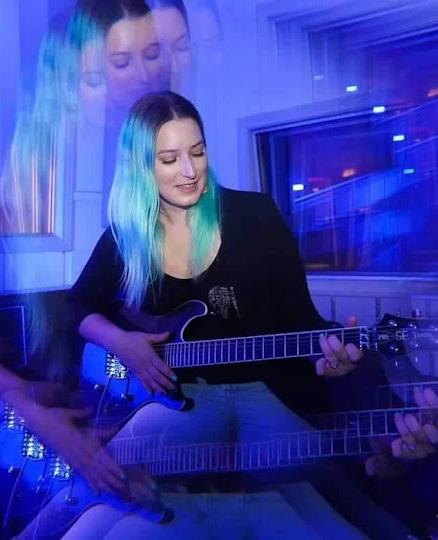
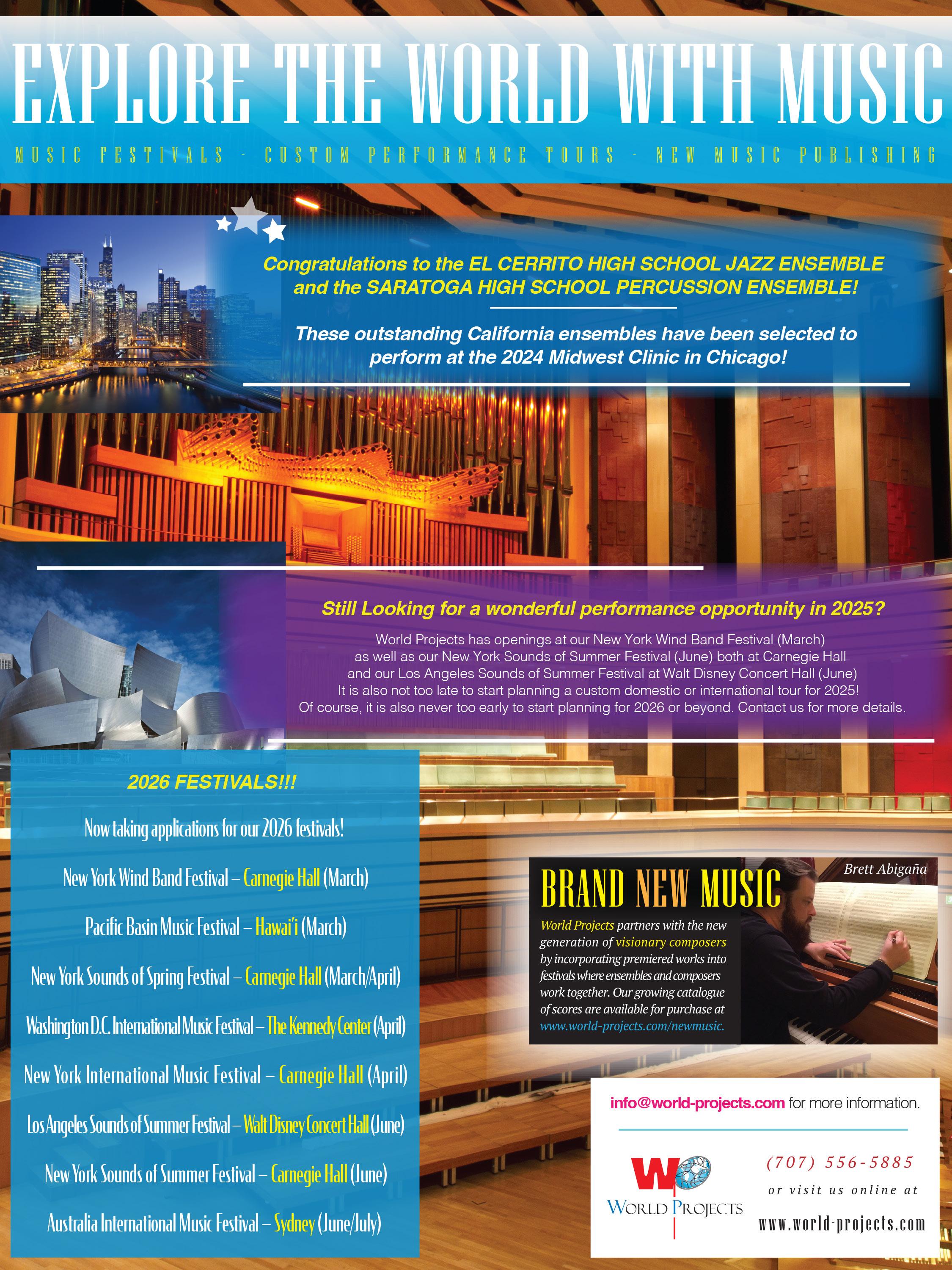
by Dr. Tamara T. Thies, Music Education in Higher Education Representative

Guiding and empowering students through music is one of the most exciting and rewarding occupations for those wishing to become music education specialists. There are many programs in higher education that offer degrees for this wonderful profession, and each program provides differing opportunities and pathways to achieve this goal. It is beautiful to have so many options from which to choose, but it can be daunting to find the best fit for each individual. Below are a few considerations when researching and auditioning-interviewing for music education programs.
Higher education institutions require all music majors to audition for admittance into a program. However, several institutions also require a music education interview. Through this interview process, a future music education major can attain insight into the priorities and philosophy of the program, while the program is determining if the individual will likely be a good fit and succeed in the program. Having two or three important questions for the interviewers about the program will assist in guiding a decision.
All higher education institutions publish the coursework needed to complete a music education degree, and this coursework varies from program to program. Examine the coursework with which you would like to interact as an undergraduate. Are the required courses open to all music majors or tailored to music education majors? Which classes and how much pedagogical coursework does a program offer? Does the coursework provide opportunities for students to expand their knowledge, skill sets, and music making into more progressive and differing cultural spaces?
The number of music education majors in a program varies by institution. Music education program sizes range from smaller programs (e.g., accepting 10-15 music education majors each year) to larger programs (e.g., 130-150 music education majors total each year). Consider how you learn best when considering program size. Smaller programs can potentially provide more individual attention with a smaller teacher-student ratio, while larger programs can possibly bring in more student diversity and assist with building a larger community of support and networking when entering the profession.
Higher education institutions in California generally require a music degree prior to completing a credential program, and these credential programs are housed in the College of Education at each institution. Depending on the institution, credential programs can add one or two years past the degree. That said, there are some institutions that integrate credential coursework alongside the undergraduate music education degree. Another variation is some institutions allow students to take coursework while student teaching, whereas other institutions do not offer this option. One other consideration is how long each institution expects you to student teach and what happens during your student teaching experience.
While this is not an exhaustive list of everything to consider when choosing a music education degree program, it is a starting place. Consider your goals for pursuing a music education degree, how you learn best, and how each program can assist you in this transformation to a successful music educator.
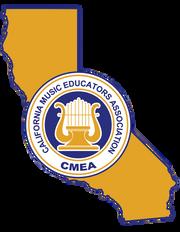
SATURDAY, APRIL 5, 2025 CERRITOS COLLEGE

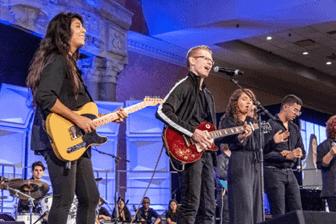
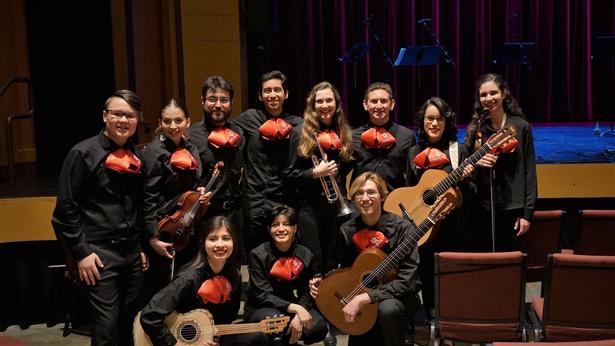
The California Music Educators Association is excited to announce our inaugural MultiMusical Festival, celebrating diverse and inclusive music making happening in schools across our state!
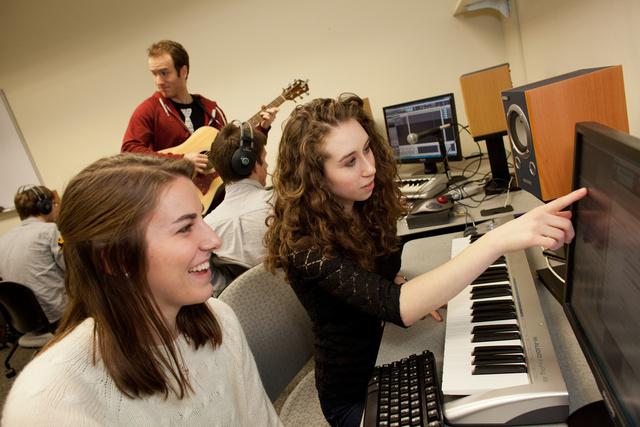
We invite you to showcase your school's unique ensembles, including mixed instrumentation, vocal groups, and creative musical collectives
Please upload 15 minutes of music with at least two pieces in contrasting styles that best demonstrate the group’s abilities (no solo repertoire) from the 2023- 2024 school year
APPLICATION
The application deadline is November 30, 2024. Here is the link to the application bit.ly/CMEA-multi-musical2025 Directors will be notified of acceptance by December 16, 2024
PARTICIPATION FEE
The participation fee for 2025 is $400 and is due no later than January 31, 2025.
QUESTIONS?
Contact Trish Adams, CMEA Executive Administrator cmea@calmusiced com
This festival provides a platform to showcase talent, innovation, and limitless ways that students can make music together.

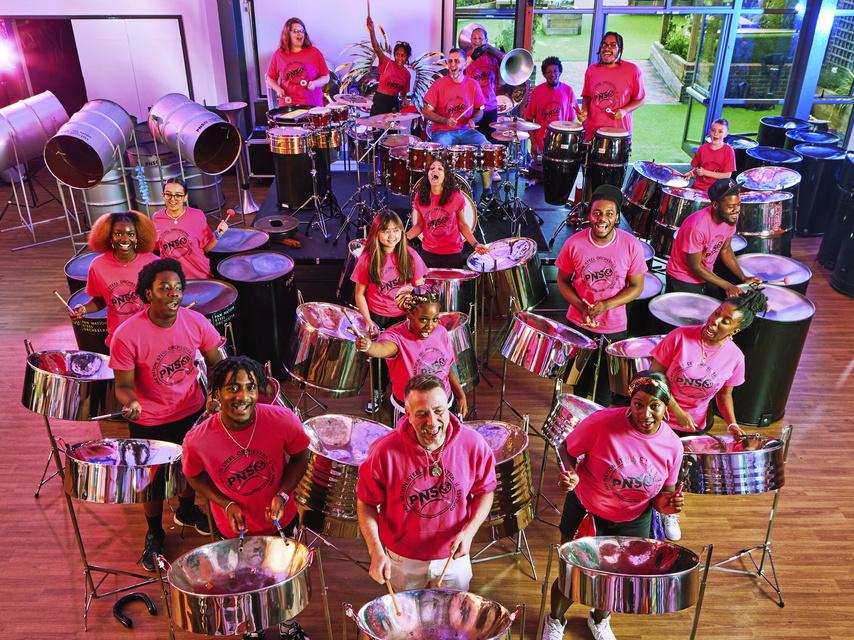
Hello Future Music Educators and Chapter Advisors,
Congratulations on another successful Collegiate Kickoff Week! Thank you for making this another incredible year of celebrating you and all that your chapters do throughout the year Read on for the latest updates from NAfME Collegiate and keep up the fantastic work!
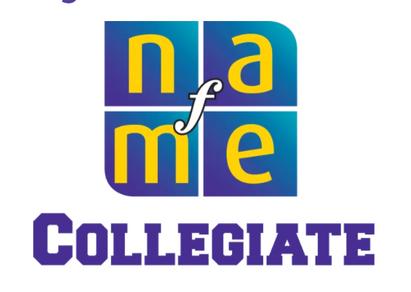
Read Now! Blog: The 2024 NAfME Collegiate Leadership Advocacy Summit
This past June, more than 80 NAfME Collegiate members from around the country gathered in the Washington, DC, area for the 2024 NAfME Collegiate Leadership Advocacy Summit. Read all about the event in this special blog by Ben Reyes, NAfME Membership & Collegiate Program Manager, and share it with your chapter!

Support our Future Leaders! Consider donating to our Future Leaders Scholarship, designed to support and inspire the next generation of music educators. Your generous donation will help empower emerging leaders and ensure the continued growth and excellence of CMEA. Click here to donate!




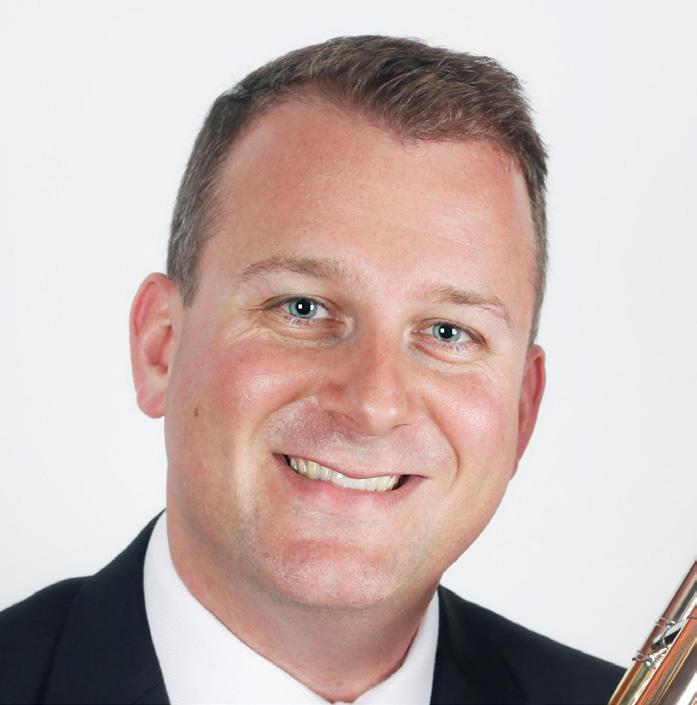
I am thrilled to start my first year as president of our section and am honored to collaborate with my fantastic colleagues on the Full and Executive Boards. It is truly a team effort. Service to the profession adds depth and fulfillment to our jobs as music educators. The connections we build through CMEA, the broader perspective we gain on music education in our state, and our role in evolving our organization are all deeply rewarding. For those teachers who aren’t yet involved, I wholeheartedly encourage you to get engaged.
love for you to join us!
Speaking of Prop 28 (AMS), I know we are all in various places with the implementation of these funds. I encourage you to keep advocating for your programs and making sure you get access to these funds. At my school, we’re now benefiting from district funding for a piano accompanist for our choirs, an expanded orchestra class offering, and sectional coaches—positions previously covered by our parent group. It’s refreshing to partner with the district and see our parent group enrich our program in new ways.
The journey to this point was slow and required persistent follow-up by teachers with administrators and the district office. Don’t hesitate to advocate firmly for what you need.
I look forward to seeing many of you at CASMEC this January and wish you all a successful and enjoyable school year!
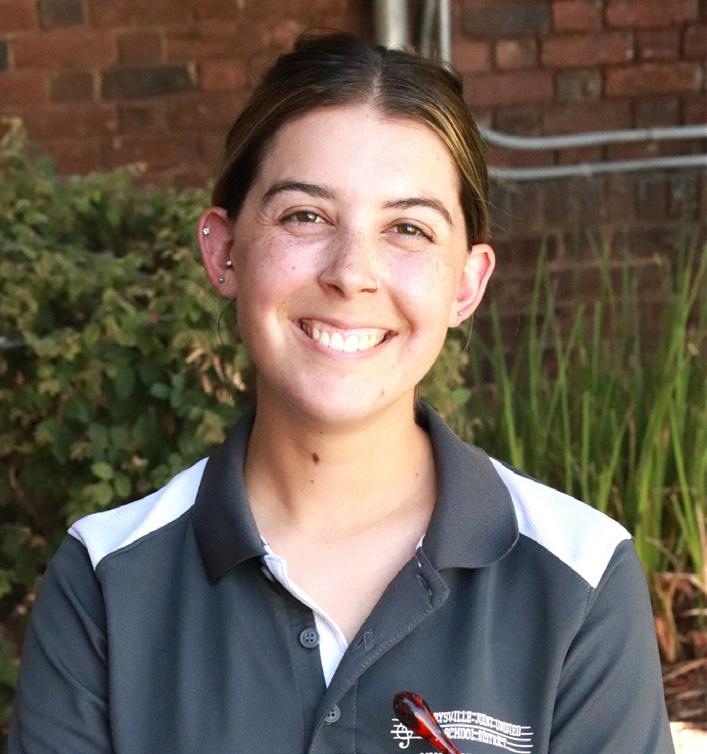
Amanda Lopes is in her third year of teaching and just landed a new job as co-director at Bella Vista High School. She currently serves as one of the Capitol Section’s two Social Media Representatives, and was just selected to teach a session at CASMEC 2025. Let’s get to know this inspiring new teacher, Amanda Lopes!
Chris: Let’s start with an easy question. Give me a list of your career highlights.

We’re off to a strong start this school year with festival registrations and preparations for our annual professional development conference. The CMEA Bay Section Conference will take place on November 15-16, 2024, at San Jose State University. We’re excited to continue hosting this event with our excellent conference host, Mark Lee, and the dedicated SJSU student volunteers!
Our Bay Section Special Representatives have curated an impressive lineup of respected clinicians and presenters who are eager to share their expertise over the two days. We’ll also host nearly 400 middle school students in our conference honor ensembles. We’re also fortunate to have CMEA State President Chad Zullinger as our keynote speaker. Additionally, NAfME Western Division President Michael Stone will lead a session on Prop 28, helping us navigate the opportunities as funds become available for a second year. I’d

Amanda: I went to Roseville HS where I was given an award by the Marine Bands. It might be the John Philip Sousa award - I can’t remember. I went to Sac State for my undergrad and credential program. At Sac State, I was drum major of the marching band. I was also president of the NAfME collegiate chapter for a year, and I was the outstanding senior for the music college. In addition, in 2024 I was honored to be selected as New Teacher of the Year for the Marysville Joint Unified School District as well as the Outstanding New Educator for both the California Teachers Association and the Feather River Service Center Council.
Chris: How was your experience in the Sac State Marching Band (SSMB)?
Amanda: The SSMB was my favorite marching experience. I‘ve done a lot of marching band, and it’s a really important part of music education. I think kids should all have that experience. SSMB was a lot of fun. I had Dr. Redfield as my marching band director my first year, then the rest of the time with Santiago Sabado as director. It was really cool to have different experiences under different directors; to see how differently they ran things. Then when Santi took over, I was drum major and his student assistant. I learned so much behind the scenes about how to run a marching band.
Chris: You were involved with the
Mandarins Drum and Bugle Corp too, right?
Amanda: I marched Mandarins for four years as a member, and had leadership opportunities too. I also taught one year on the visual staff, which was fun. Also, all throughout my undergrad, I taught in the Mandarins Music Academy at David Luben Elementary. It was a great opportunity to teach while going through the undergrad and credential program. Going through that was great preparation for my student teaching experience. Jim Mazzaferro was my mentor teacher in both the Mandarins Music Academy and in the credential program.
Chris: Jerry Lopes is your grandfather, and one of the founding members of the CMEA Capitol Section. What’s it like being your grandfather’s granddaughter?
Amanda: It’s a lot of fun growing up around music. When my grandpa was leader of the Capitol Pops, me and my friends played in the band in high school. Then getting into the music educator community, it really helped with making connections. And my uncle played bass so if somebody didn’t know my grandpa, they knew my uncle, Tom Lopes. But I also wanted to make sure that any of my success was wellearned. I didn’t want to ride on anybody’s coattails.
Chris: More Q’s about growing up in the Sac music ed scene. Did you participate in any CMEA Capitol Section events?
Amanda: I had two directors at Roseville High School. The first was Mark Toffelmier. I credit him with inspiring me to want to become a music educator. He took us to Golden Empire Music Festivals and Marching Band comps and stuff like that.
Chris: What was your first full-time job, and what was your favorite thing about that job?
Amanda: My first teaching was at Anna McKenney Middle School in the Marysville Joint Unified School District in the Northern Section. I was there for two years. I think my favorite part was when I got the job, there was no music program, so I was able to pick the classes I wanted to teach, and make it fit my vision for the program. So my beginning classes were split by instrument groups, brass, woodwind, percussion. Then the second year, they combined for advanced band. And I also got
to work with Becky Stewart as a mentor and a friend. That was incredible. It was a really great two years.
Chris: You recently landed a new job at Bella Vista High School. Tell me about it.
Amanda: I’m now Co-director of Bands with my old SSMB director, Santiago Sabado. He split the music department pretty much down the middle, so I teach Jazz Band II. We co-teach the marching band, but in the spring it will split into two bands, Concert and Wind Ensemble. I’ll teach Concert Band. I also have the Beginning Band and two piano classes.
Chris: How exciting is it to work with Mr. Sabado again?
Amanda: It’s been so much fun! At first, he called me to invite me to apply for the job, and I thought I’d stay at the McKenney Middle School. Then he called again to say if I was still interested, he’d help me through the transition process. Also, Wendy Carey, the choir teacher at BVHS, has been so kind and supportive. I’m so excited to work with people who have the same energy and vision for giving the kids as many opportunities as possible to be part of the school community.
Chris: The inspiration for this interview came from something amazing on a recent Facebook post of yours. You have been selected to teach a session at CASMEC 2025. What’s that all about?
Amanda: One of the people I’m presenting with, AJ Gonzalez, he was also a drum major in HS at Lincoln HS. We competed against each other. That’s where we first met. Then we both ended up marching Mandarins together. He and I were talking about how, as new teachers, there’s an overwhelming amount of things you have to learn; things they can’t teach you at the credential program. So we thought, wouldn’t it be cool if we shared from our own experiences what we had to learn on the fly in the middle of our first years of teaching, things that would help the next generation of music teachers. We also pulled in Pia Satana. So the three of us will share the things we learned and the advice we got for our first jobs; and also share resources too. Hopefully, new teachers will find it useful.
Chris: That’s really great! Being a new teacher does have a big learning curve. Okay, more questions about you. What’s your primary instrument, secondary
instrument, and first instrument?
Amanda: Trumpet, and trumpet. No secondaries.
Chris: Who are your personal greatest music education heroes?
Amanda: That’s a hard question. I obviously have to give kudos to Mark Toffelmier. He was my main reason for pursuing Music Ed. Santi as well, with his influence and support; even when I was in HS with him teaching Drum Major camp. Dr. Redfield is such an influential person and a wealth of knowledge. I had lots of classes with him and you just try to absorb so much. And the last one is Becky Stewart. She is gonna do amazing things for Music Ed on a high level.
Chris: Why did you become a music educator in the first place? Was there a specific experience, or moment where you knew, or did it just kind of happen?
Amanda: A majority of my family are educators. My mom taught at my elementary school, and everyone told me when I was growing up I’d be just like her, I’d be a teacher. I helped in her first grade classroom and very quickly learned that I didn’t want to be a classroom teacher. Let’s just say my mom is a far more patient person than I am! But I liked helping people through teaching. So things kind of clicked when I got involved in Band Leadership in highschool MB.
Chris: If you could have been a member of any famous band, past, present, or future, popular or unpopular, and regardless of genre, what band would that be?
Amanda: I feel like I’m stuck between two options. I’d either want to be one of the horn players for Harry Styles, or one of the members of the band Couch. They’re fantastic!
Chris: What are your hobbies when you’re not doing Music Ed?
Amanda: I take dance classes at a local studio with some friends. Then I’m actually gonna be a part of the Folsom Lake Jazz Band directed by Molly Redfield.
Chris: What’s your favorite TV show right now?
Amanda: The Walking Dead.
Chris: Favorite TV show of all time?
Amanda: The Office… or The Last Airbender.
Chris: Tell me about pets.
Amanda: I have a four-year-old kitty named Peggy after the character, Peggy Carter, from Captain America.
Chris: If you could only eat one meal for every meal of the day for the rest of your life, what would it be?
Amanda: Mongolian BBQ.
Chris: Red or white wine?
Amanda: White wine.
to hear the ensemble(s), and give feedback with a clinic afterward. Our CMEA To Go festival option is the perfect solution for those schools with situational challenges or hardships. Register here to sign up.
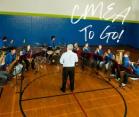

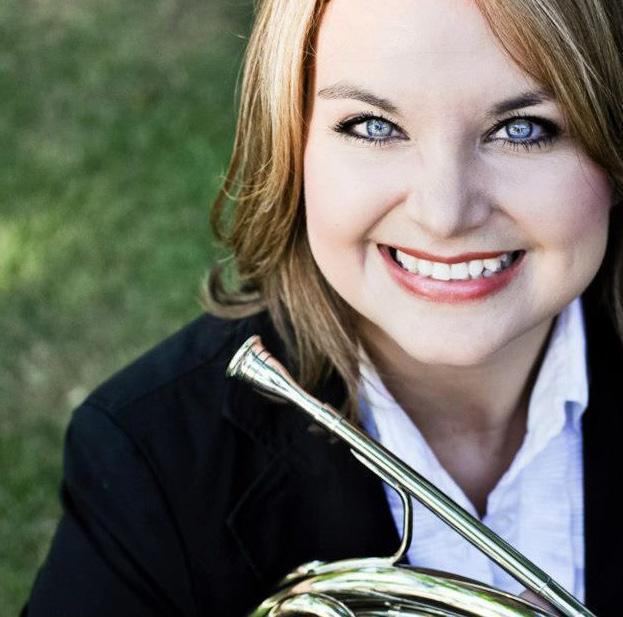
This year, the CMEA Central Section is working hard to reach as many teachers and students as possible, to offer a rewarding and educational festival experience. Due to district budget cuts, challenges in scheduling, and staff shortages, some schools have an extremely difficult time getting to a festival with reliable transportation. Additionally, some teachers feel that their ensemble may not do so well at a CMEA festival. Because of these reasons and more, we have worked on a new program that has the potential to reach ALL students. We will send out two CMEA Adjudicators
The Central Honor Choir, hosted by CCDA, will be held at the Clovis North Performing Arts Center, November 7-9. The conductors will be Dr. Nicolas Dosman for TTBB, Dr. Jennifer Heder for SATB, and Fernando Malvar-Ruiz for SSAA. This will be an exciting weekend of Choir, and a wonderful experience for the students!

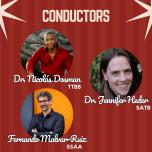
The California Orchestra Directors Association is teaming with CBDA’s Super
Saturday event to create opportunities around the state for young musicians who are seeking to make an All-State Honor Ensemble. The event was held at Fresno City College on September 7. This event is reaching students from all over the state, in hopes to encourage them to achieve higher standards in music performance. What a great partnership, and something that we all should celebrate!
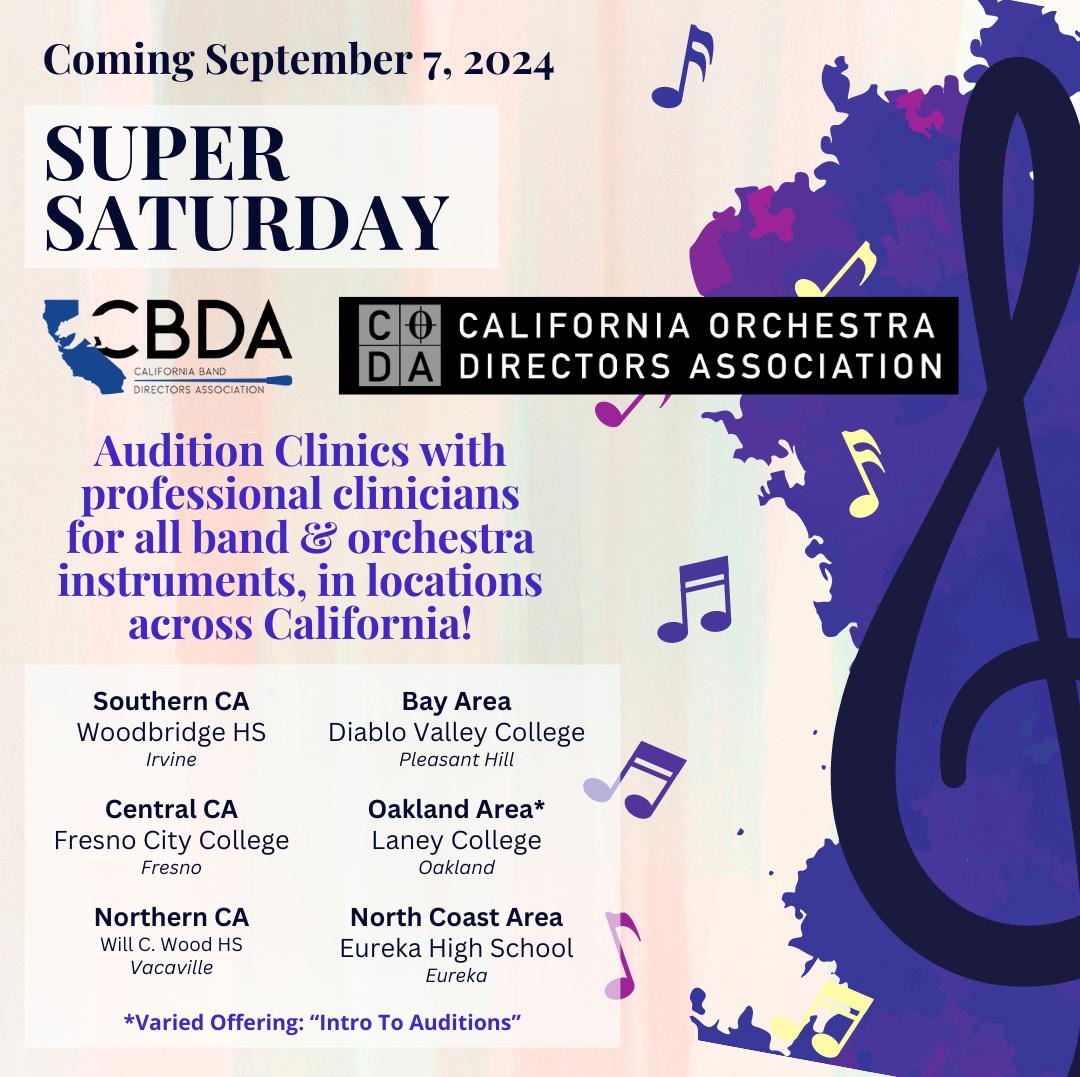
The Central Section hopes to expand opportunities for all our music educators and students in the region. We will be hosting a Young Ensembles festival/ showcase in late spring, and we are looking at ways to connect with general music educators around the Central Valley, hoping to offer Orff workshops and clinics, and other avenues of support for their programs. Though we still have many vacancies to fill in the classrooms throughout our section, we are committed to rallying around those currently teaching in order to ensure that the next generation of music educators is nurtured and given every opportunity to succeed!
The Central Section board is a diverse group of educators with a fervent desire to grow the impact of music education throughout the Valley. I’m proud to be the President of this board, and look forward to the many musical wonders this year will bring.
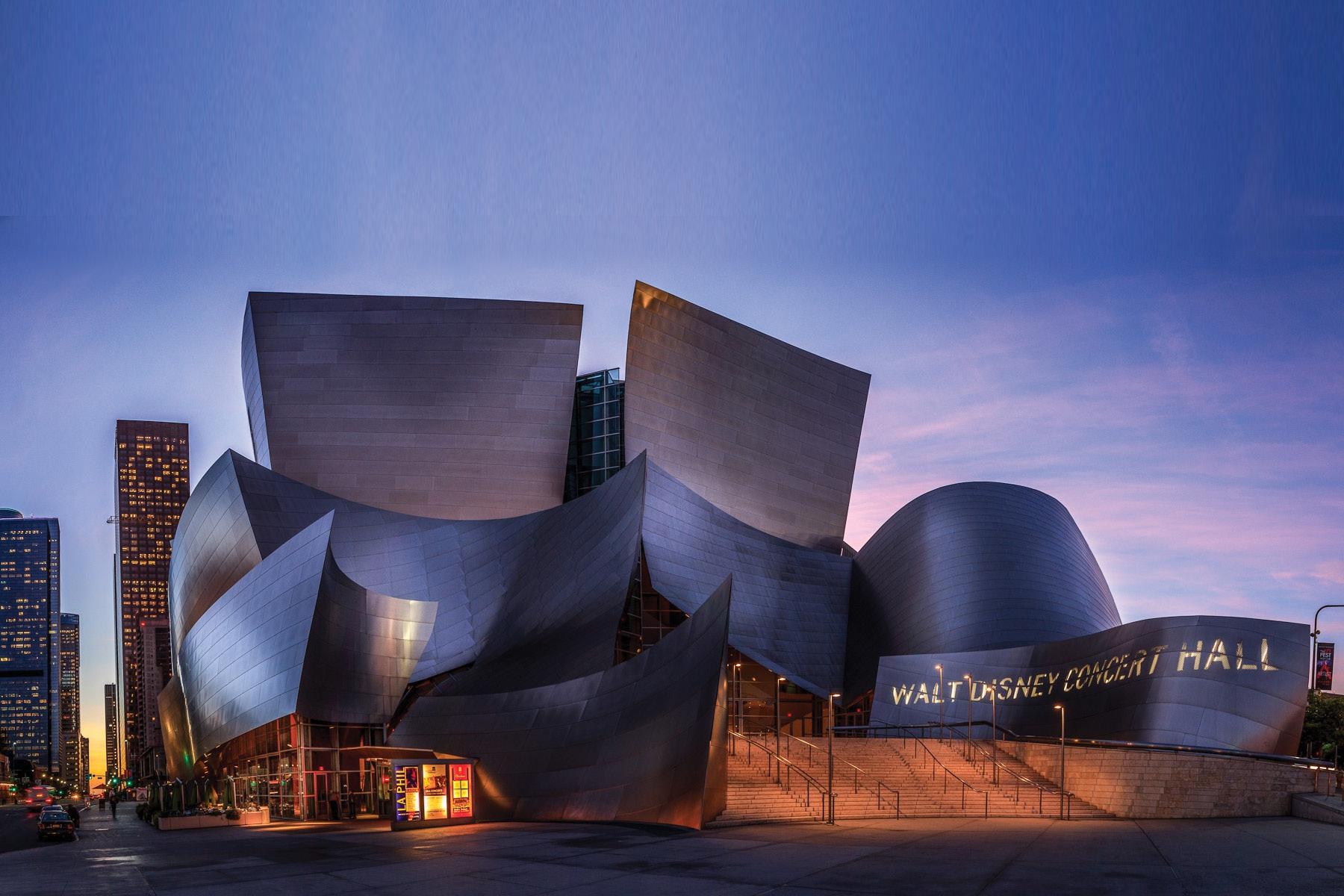


Youth Symphony Orchestra | Band | Choir
Summer Music Festival by LAYP at Walt Disney Concert Hall
AUDITION
Summer Season Youth Orchestra
Summer Season Youth Band
Summer SATB Chamber Singers
(5 th-12 th school grade)
For more information, visit www.layouthphilharmonic.com
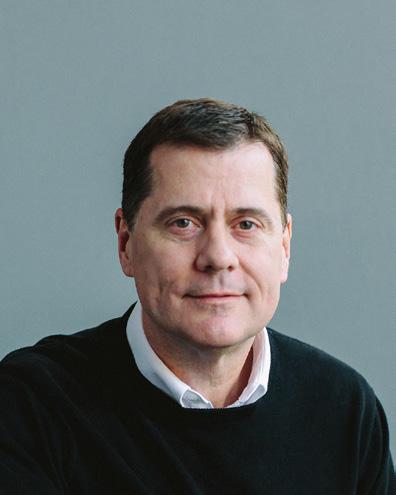
Dr. Thomas Verrier
Director at Vanderbuilt University)





Barry Capiaux, Central Coast Section President
in my decision to become a music major in college, which eventually led to my career in music education. It is gratifying to now return and have my students be a part of the same program. This year, I have SEVEN students performing at the festival. It is important to remember that the experience we provide in our music classes can be life-changing, and our students will likely remember us for the rest of their lives. Our role as music educators is much more than teaching how to play and sing the correct notes. It is about providing people with the opportunity to shine and feel like they belong to something special. I wish you all a fantastic year, and may you create many positive experiences in the lives of your students.
I love the beginning of the school year! I love the freshly sharpened pencils, the sparkly clean and organized classroom, and all of the potential for success that a new school year brings. We are so fortunate in our profession to have this fresh start every twelve months; an opportunity to evaluate what is going well in our programs and our sections and where improvement is needed. We have the joy of welcoming new and returning students into our classrooms, eager for a fresh beginning and excited to learn and make music. While basking in the joy of the new school year we also have the opportunity to reevaluate the challenges we face as educators. We can take this time to consider all we can do to support and connect with each student, and foster a sense of belonging and community in our classrooms. In the North Coast Section we are excited for all the opportunities and challenges that this year brings!

also result in a stronger connection between members of the North Coast Section.
Opportunities for our students to participate in special events and festivals will continue this year. Our Honor Orff Youth Ensemble brings together students in grades 4-6 for a day-long Orff workshop each year, creating a sense of community for these students and their teachers and providing them with a rich musical experience. Students in middle and high school have the opportunity to participate in our Solo/ Small Ensemble Festival, Choral Festival, Instrumental Festival, and Jazz Festival. Our All County Music Festival has been renamed the North Coast Music Festival to reflect the fact that students from multiple counties attend this festival each year. Our annual festivals are a wonderful opportunity for students and teachers to connect and grow as musicians.
I hope to meet the daily challenges and joys that our profession brings with this beginning-of-the-year enthusiasm and energy throughout the year. I have high hopes for the potential for growth in my students and within our section. I wish you all the best as we prepare to embrace the opportunities and challenges of this school year!
CMEA - Northern Section sponsored the second annual Northern California Music Teacher Kodály Institute from July 14 – 26, 2024.
At this workshop, music teachers from all over Northern California gathered at Chico State for two full weeks of Kodály Level One certification. Sponsored by CMEA - Northern Section, and supported by local school districts, teachers were submersed in musicianship coursework, elementary pedagogy classes, folk song analysis and research, as well as having the opportunity to participate in the course’s choral ensemble with Hungarian master teacher, Ildi Salgado.
We hope to grow the Kodály pedagogical approach in the North State and plan to continue to offer both Level One and Level Two training and certification next summer. We hope you can join us in the summer of 2025!

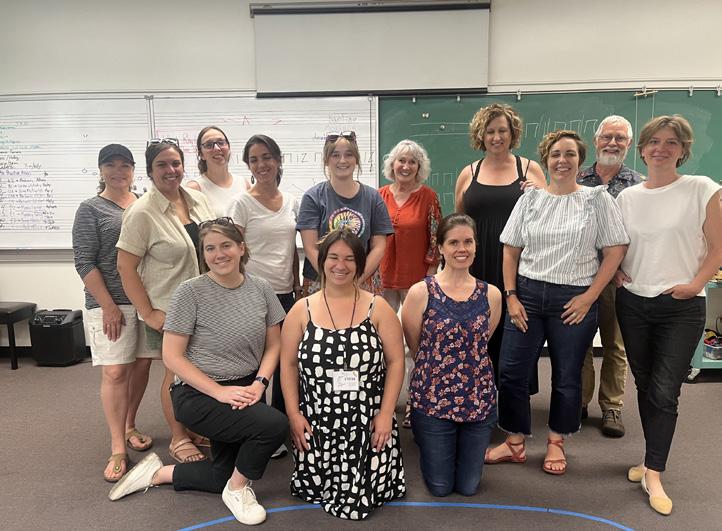
With the recent expansion of Northern Section elementary programs with the passage of Prop 28, courses like these have become even more important in order to properly prepare our teachers for teaching elementary students. Many of our school districts have been without elementary music for decades, so we are excited about this rebirth of elementary music programs and the increased number of music teachers being hired in our areas of the state.

Southeastern Section President

Jane Brown, Northern Section President
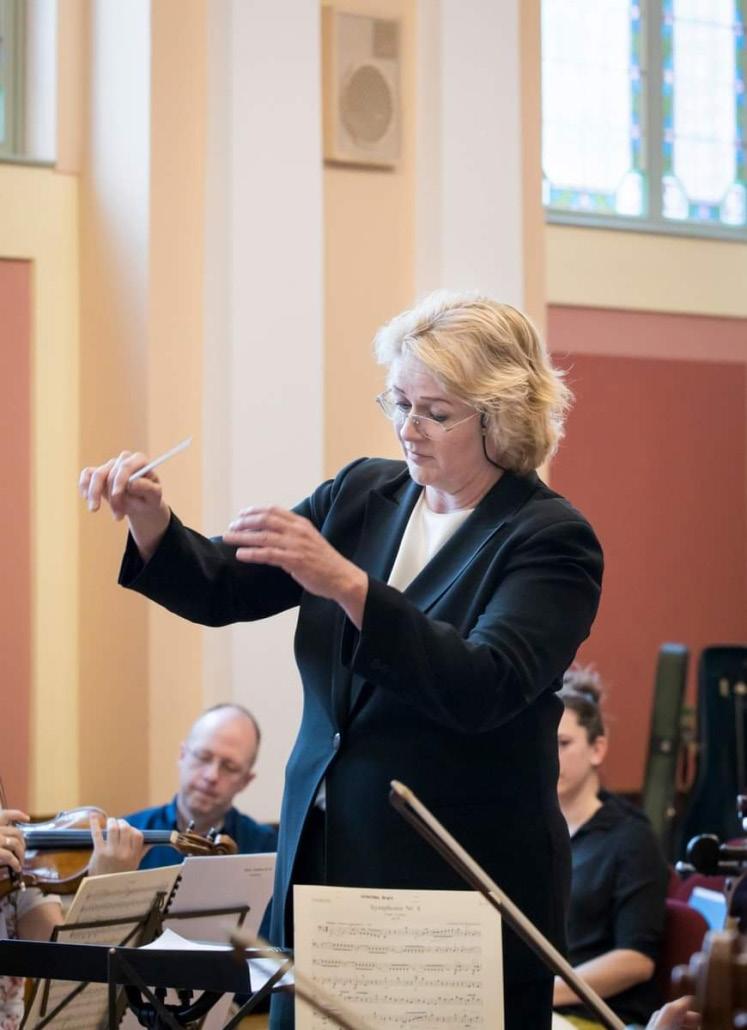
It was wonderful to have a combination of both seasoned and new teachers learning together in an intense, immersive experience. This year’s course culminated with a choir performance and everyone involved worked tirelessly to grow both as musicians and teachers during summer break!
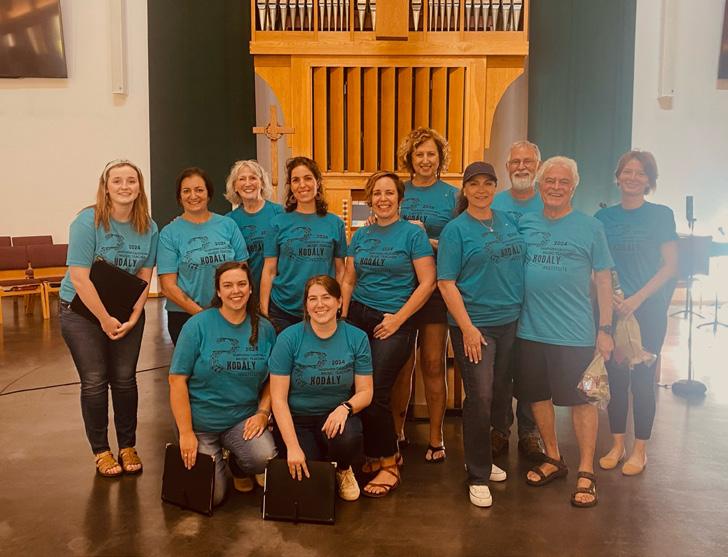
Navigating the First Year of Prop 28 Implementation: Observations from a District-Level TOSA, by CMEA-SES Member Michael Fleischmann
Recognizing the need for enhanced support in visual and performing arts, my school district, like many others, established a district-level TOSA (Teacher on Special Assignment) position with a special focus on implementing “Prop 28” during its first year. As we navigate this transition, many colleagues are feeling the frustration of delayed or rejected requests. While the rollout of AMS has presented its share of challenges, I hope that sharing my experiences as a TOSA can provide context and address some of these concerns.
As part of the California Education Code, AMS (Arts and Music in Schools) is now a legal mandate, with guaranteed
funding each year, similar to programs like Title I. This makes it essential for districts to consider decisions and policies related to its implementation carefully. The state of California has provided minimal guidance, leaving districts to make decisions based on their best judgment. This lack of clarity has made the rollout of AMS particularly challenging for everyone involved.
In my first year working at the district office, I quickly realized that my own expectations around timeliness and efficiency needed adjusting. Coming from a role as a band director where decisions were made and executed within hours, the slower pace at the district level has been a significant adjustment. However, it’s important to recognize that this slow pace isn’t necessarily a reflection of apathy towards the arts—it’s simply the nature of the broader scope of district-level operations.
The law allows districts three years to spend each year’s AMS funding, creating an overlap of funds from year to year. Our district’s fiscal team made the strategic decision to delay spending the first year’s allocation (‘23 - ‘24) until year two (‘24 -’25), ensuring that we stay a year ahead. This approach allowed us to prepare thoroughly before fully engaging with AMS funding. While I was initially eager to start spending, I’ve come to appreciate the wisdom of this strategy. Big ideas at the district level take time, and progress, no matter how slow, is still progress. Patience and persistence are key.
The introduction of AMS funding has been met with great excitement for us all, as it provides long-awaited support for arts education. However, it’s important to remember that this funding is shared across five disciplines—dance, theatre arts, visual arts, media arts, and music. This necessitates teamwork and compromise, as the allocation of funds ultimately rests with the principal. While some decisions may not align with everyone’s preferences, it is possible to reallocate funds in future years if something isn’t working as planned. Flexibility and collaboration will be crucial as we move forward.
Staffing has been one of the significant obstacles we’ve encountered. The total cost of a full-time certificated teacher exceeds
the salary listed on the pay scale due to associated benefits and fixed costs. At some smaller sites, particularly elementary schools, AMS funds may only cover a portion of a full-time position, leaving little (or nothing) for materials and supplies. While this was initially disappointing, we’ve identified Title IV funding as a potential resource for VAPA (Visual and Performing Arts) teams to supplement our budget for necessary materials and professional development.
Additionally, disparities in AMS funding between large and small schools have created challenges. While some sites have adequate funding, others, particularly smaller schools, struggle to cover even basic needs. Unfortunately, the law prohibits transferring funds between sites, limiting our ability to address these disparities. Although we’ve made significant strides in creating positions with AMS funding, we still face gaps in programming across the district.
The law is somewhat vague regarding what qualifies as a VAPA program. It’s important to ensure that any instruction in visual and performing arts aligns with the core arts curriculum and has the appropriate course code. Using AMS funds for programs like coding or cheerleading, which don’t align with these standards, is not permissible. Using standards as a guide, we were able to educate site leaders and avoid the misappropriation of funds in this manner. For guidance, the California Department of Education (CDE) FAQ website and EC §8821(a) provide helpful resources.
Supplanting has been another challenge. With budget cuts in effect, some sites were tempted to use AMS funds to “save” positions previously funded by general funds. The guidance I received was clear: positions funded by general funds must continue to be supported by those funds and cannot be replaced with AMS money. This led to some creative attempts to rebrand existing positions in name to avoid supplanting, a practice we ultimately avoided.
If you suspect supplanting is occurring in your district, share your concerns with your principal. Led by active parent groups, we are already beginning to see concerns
being brought to school boards when supplanting is suspected of taking place. The California Department of Education also encourages us to bring concerns directly to them: Prop28@cde.ca.gov. The website create.ca.org offers excellent advocacy tools and resources.
Transparency is a critical component of AMS, requiring districts to report how they allocate funds each year publicly. I recommend reviewing your district’s public report, available on their website under EC §8820(g)(4). In our district, we reported “zero dollars spent in year one (‘23 - ‘24)” with plans to begin expenditures in year two (‘24 - ‘25). Although the law doesn’t require the public publication of individual site expenditure plans, each site must have one under E.C. §8820(e), which you are entitled to review.
To stay informed, familiarize yourself with the educational code for The Arts and Music in Schools - Funding Guarantee and Accountability Act [8820 - 8822]. Public information on annual funding allocations by school site is available on the California Department of Education (CDE) website. Additionally, the CDE maintains a helpful FAQ page and a resources page with information for families, information for educators, webinars, and more.
And as far as the CMEA Southeastern Section activities, we have fantastic opportunities planned for the coming year.
• Social Hang at CASMEC
• Student Leadership Symposium, Saturday, January 12, 8am-12pm, Cerritos College
• Regional Solo and Ensemble Festival, Saturday, April 12, 8am3pm, Cerritos College
• Mariachi Showcase, Saturday, May 3, 8am-2pm, Sunkist Elementary (Anaheim)
• Collaborations with state-level CMEA events.
We continue to strive to find ways to support and help our membership and their students. Feel free to jump on board!


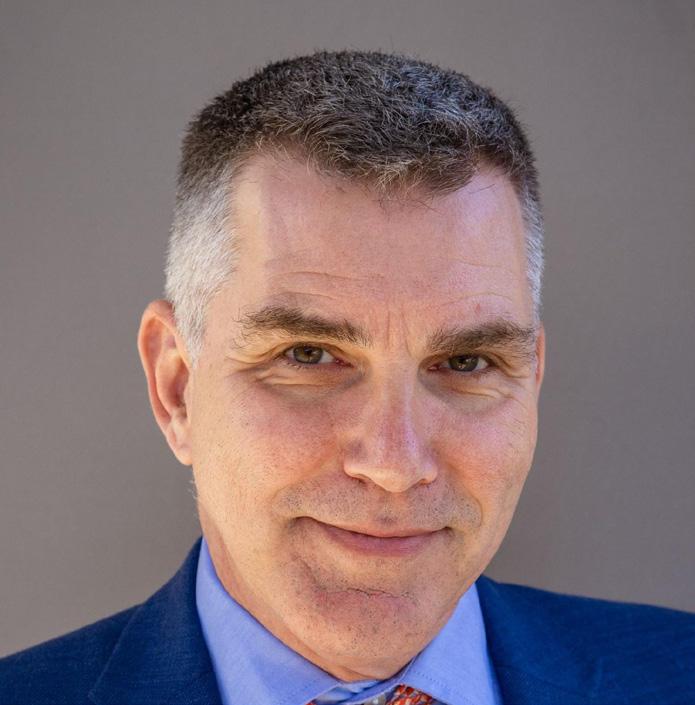
Christian Tordahl, Southerm Border Section President-Elect
from Sunny
As I write this update, my school district has entered the second full week of school. Most of the districts in the Southern Border Section are back in full swing, and I’ve seen some of my high school band colleagues post videos of their marching band camps and beginnings of their shows. Bring on fall!
July 1, I officially began my term as President-elect of CMEA Southern Border Section. We also welcomed our new Treasurer, Fred Lee, retired Band Director most recently from Rancho del Rey Middle School in Chula Vista. Fred also conducts the Coronado Concert Band (and has for many years). Thank you, Fred, for continuing to serve our music educators and students!
are any new music educators in your midst. Many school districts in California have begun spending their AME funds (Prop 28) to bring in new teachers. Here in La Mesa-Spring Valley Schools, we have added eight elementary VAPA teachers (four are music), a middle school music teacher, and a middle school music paraprofessional. If you have new music teachers in your district, encourage them to join CMEA and NAfME. Let them know about local events, CASMEC, and the professional learning resources available on the national NAfME website.
In terms of events, we are looking to expand our festivals throughout our section to better serve our members throughout both southern border counties. Look for information on upcoming festivals throughout the year.
I wish you all the best, and encourage you to remember, as Bono put it, “Music can change the world, because it can change people.” Thank you for changing the lives of the children of California for the better, because you teach them music.
first year as President and I am excited to get to work to serve our section.
This year, the Southwestern Section will be focusing on three main objectives. Our first objective is to engage with and have more participation from throughout the entire Southwestern Section. The Southwestern Section includes Los Angeles, Ventura, and Santa Barbara counties; however, most of the section participants are from the Los Angeles County area. Our second objective is to provide opportunities for our members and their students to be celebrated locally. We are hoping to add section awards this year in the spring semester as well as a showcase festival

Fall is a great time to be a music educator. We are (hopefully) refreshed from summer break, with plans for all the great things we are going to bring to our students and communities. As tiring as the fall schedule may be, we are also full of beginning-of-the-year energy, optimism, and hope for all we want to achieve. It’s important for us to remember that we don’t have to go it alone, but we have a local, state, and national professional organization we can turn to when we need a festival, professional development, new ideas, or just someone to listen to us - thanks, CMEA mentorship and support program!
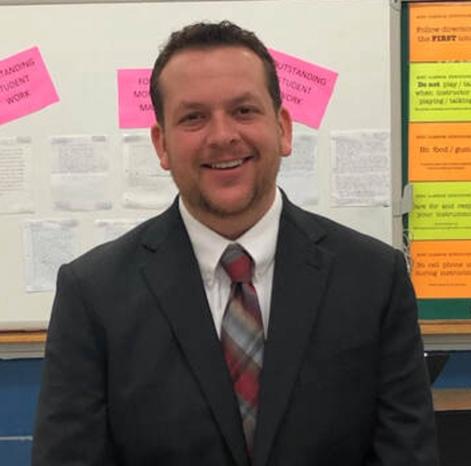
As you navigate the new school year in your district, look around to see if there










by Dr. Megan Foley, CMEA Creating and Composition Representative
Hello! My name is Megan Foley and I am thrilled to be your creating and composition representative for CMEA. To help you get a good start to the year and perhaps get some ideas going for your groups, I have added a few resources below. Please let me know if I can be of help in any way. Do you have ideas or resources that you would like to pass along? Success stories? Struggles? Please reach out to me at: mfoley@polytechnic.org.

A great book that I have referenced often is Music Outside the Lines: Ideas for Composing for K-12 Schools, by Maud Hickey. It is available through JW Pepper. Hickey offers a wealth of ideas for composing with a wide range of student abilities and grades.
Music Discovery: Improvisation for the Large Ensemble and Music Classroom by Healy and
Ankney. This is another great book with a wealth of ideas for all sorts of large ensembles. Includes lesson plans, rubrics and assessment.
Hooktheory - great for chord progressions of many popular tunes. I have used this to teach students about how pop tunes are constructed. This link goes to a free feature of Hookpad, which may or may not be a good (future) investment, particularly if you are teaching songwriting.
Speak Your Music. A series of videos with musicians about the creative process. Check them out!

I discovered this podcast series: Great Music Teaching. Worth a listen!



Have you heard? Smithsonian Folkways has recently released a handful of brand-new and FREE materials for music educators!
Introducing Smithsonian Folkways Music Pathways! Each pathway offers an interdisciplinary journey through various musical themes designed to engage students over a series of lessons. Grounded in the World Music Pedagogy approach, each Pathways is participatory, research-driven, and deeply attuned to pressing social issues. Perfect as a supplement to your curriculum, the Music Pathways connect culturally diverse musical traditions with history, social studies, language, art, and other school subjects.
Check out their latest Music Pathways: “Estoy Aquí: Music of the Chicano Movement” and “Cajun and Zydeco Music: Flavors of Southwest Louisiana” (more coming soon!)
- Dr. Will Copola, CMEA Global Music Education Representative






































































Another great year of advocacy for CMEA culminates at the Capitol! Check out this short promo clip from our Stand Up forArts day in Sacramento. Thank you to everyone who was involved in making our past day a success, and be sure to mark your calendars to join us back in Sacramento for our next Stand Up for Arts advocacy day.













































































































by Dan Sedwick

This article appeared as part of a longer article in the August issue of Teaching Music (Vol. 32, Issue 1), and is reprinted with permission of the National Association for Music Education.
Del Norte County Unified School District is nestled in the heart of the Redwoods and is the last county along the northern coast in California. Currently the district employs seven full time music teachers that run a comprehensive instrumental, choral, and classroom music program for nine schools. Music instruction begins in kindergarten, recorder instruction is in the 4th grade, and band is introduced in the 5th grade. At the middle school level, ukuleles, choir, and various levels of band, including percussion ensemble, are offered. At the high school level (the only high school in the county) we have two full time teachers with a student population of about 1000. In addition to choir, band, marching band, colorguard, percussion, steel band, and jazz programs, we now are offering our newest class in instrument repair.
Instrument repair in our school district has always been difficult. When I first started teaching 16 years ago, we had a road rep from the closest music store in Grants Pass over 70 miles away. This was a valuable resource but still had its problems. Our repair budget was very limited and we always had to prioritize major repairs and never had the budget to do more than a handful of
instruments a year. The other major problem was that we had to wait…the turnaround time was about 30 days to get a solder joint put back on a trumpet. The inventory was in rough shape. There was no repair budget and the inventory was tired, old and many instruments were in need of repair and non-functioning.
I had a little knowledge in repair coming from a music store background in college. I worked at Nick Rail music in Santa Barbara and during my four-year stint working for the company I did some basic repairs. I mostly did woodwind repadding and clarinet tenons, but did a little bit of everything where needed. It was enough for me to help subsidize the district shortfall in instrument repair when I started work for DNUSD in 2008. When I was hired at DNUSD and the other teacher found out I could do a tenon cork…Let’s say, I have done a few! As the years progressed, the instrumental program grew to about 3000 active instruments a year and we had a problem. Preventative maintenance was never a thing. We sent out what we could per year, but mostly we had to put band-aids over band-aids.
About eight years ago, a colleague, Sara Rogers (a music teacher at DNUSD), and I started investing some of the district’s yearly music budget into a few basic and some more advanced tools to fix instruments. Trombone slides were always the worst. In the early days, a dent in the slide meant we retired the horn. That is not the case now!
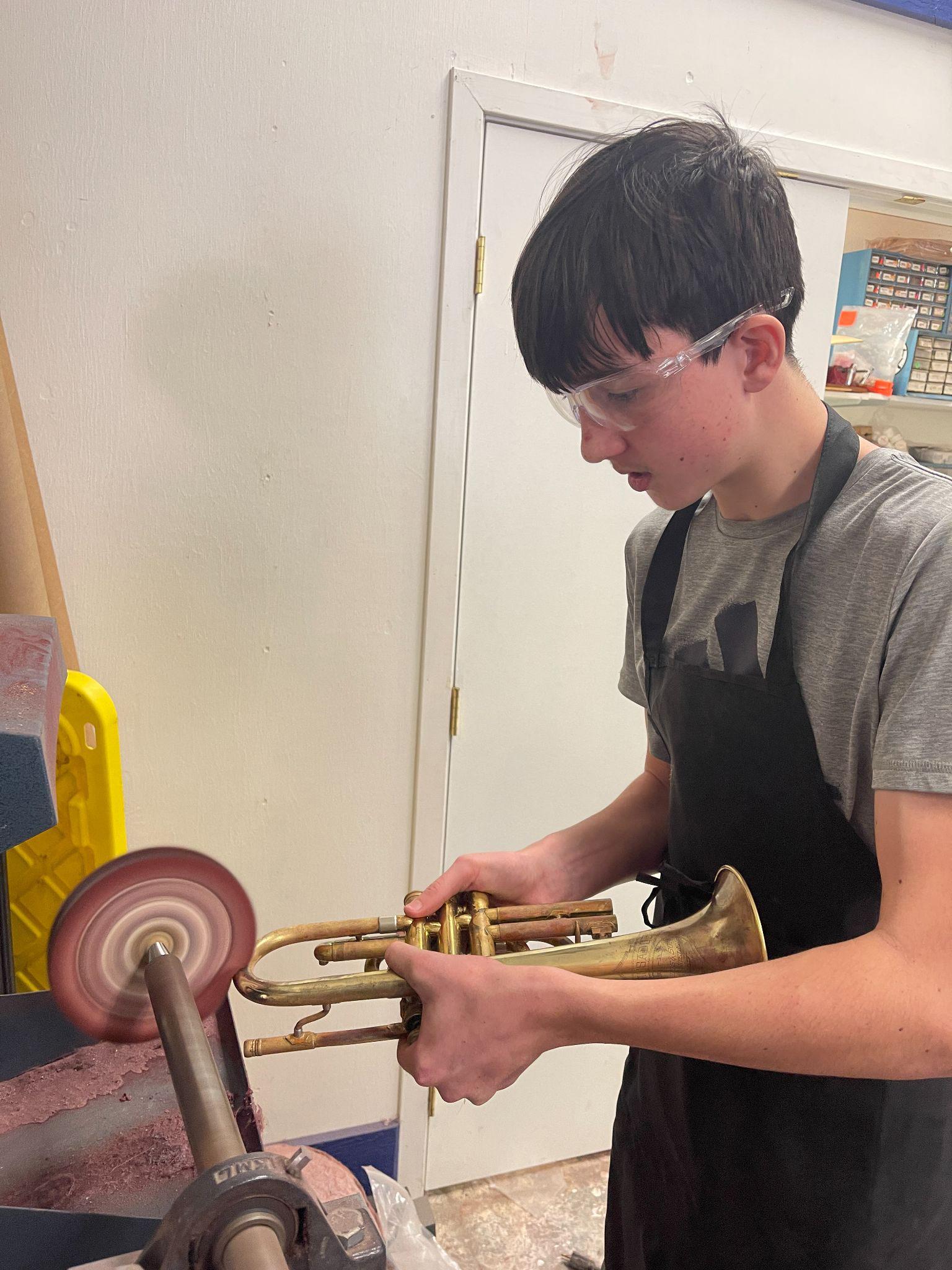
As we gained traction and proved to the district that if they invested into the program we, the teachers, could help keep the budget in line, interest grew in the program. We also received a very generous donation from Nick Rail of an entire repair shop from a closing music store. Thus, instrument repair as a class was born! I am now in my 5th year of teaching this class. The first year (during covid) we had six students and we had a closet to use for the shop. It wasn’t glamorous but it was awesome! Two of the students in the first class went on to Renton Technical College and now are
working at a music store in Tucson, Arizona, doing instrument repair! In year two, the class jumped to 20 kids but I had to tell about half that they had to drop the class since there was no room to teach safely in our small closet. We got the class down to 12 but it was still too many and the class always spilled into the instrument room off of the main classroom. Even with the space challenges, we had a great year and the students were fixing instruments at a high level. A baritone sax was brought in from one of the middle schools and a student that had about six months of the class was able to bend and put the horn back in regulation within the hour and the horn was back at the school site within 24 hours.
Teaching instrument repair has always had two main goals: 1. Teach the students a trade that is music related but not performance or education based. 2. Maintain DNUSD’s inventory at the highest level. I can say with confidence that we are achieving those goals. I have now graduated three students that have gone on to make this a career and this past summer we went through all 3000 district owned horns and did preventative maintenance on all of them.
With direction from Aaron Moss, Instrument Repair teacher at Stockton USD, this year the class is a full-fledged CTE (Career Technical Education) class. His guidance and professionalism has helped the class reach this goal of CTE.
Music in Del Norte Schools is thriving. We have an incredible staff that works very closely together and meets regularly to align curriculum and plan events. Also, a huge shout-out to the very supportive administration: Jeff Harris - Superintendent, Thomas Kissenger - Assistant Superintendent, and Alison Eckart - Principal, Del Norte High School.
It has been an honor to give clinics and presentations around Oregon and California. In April, I will be presenting at NAPBIRT’s (National Association of Professional Band Instrument Repair Technicians) annual conference with Aaron Moss and other instrument repair instructors about repair and CTE. Spreading the word about this opportunity for students has been one of the great honors of my career. This craft needs advocacy right now and we are starting to see the results of this work.
If anyone has any questions on how to get started with this, please do not hesitate to contact me. (ddsedgwick@delnorte.k12.ca.us)
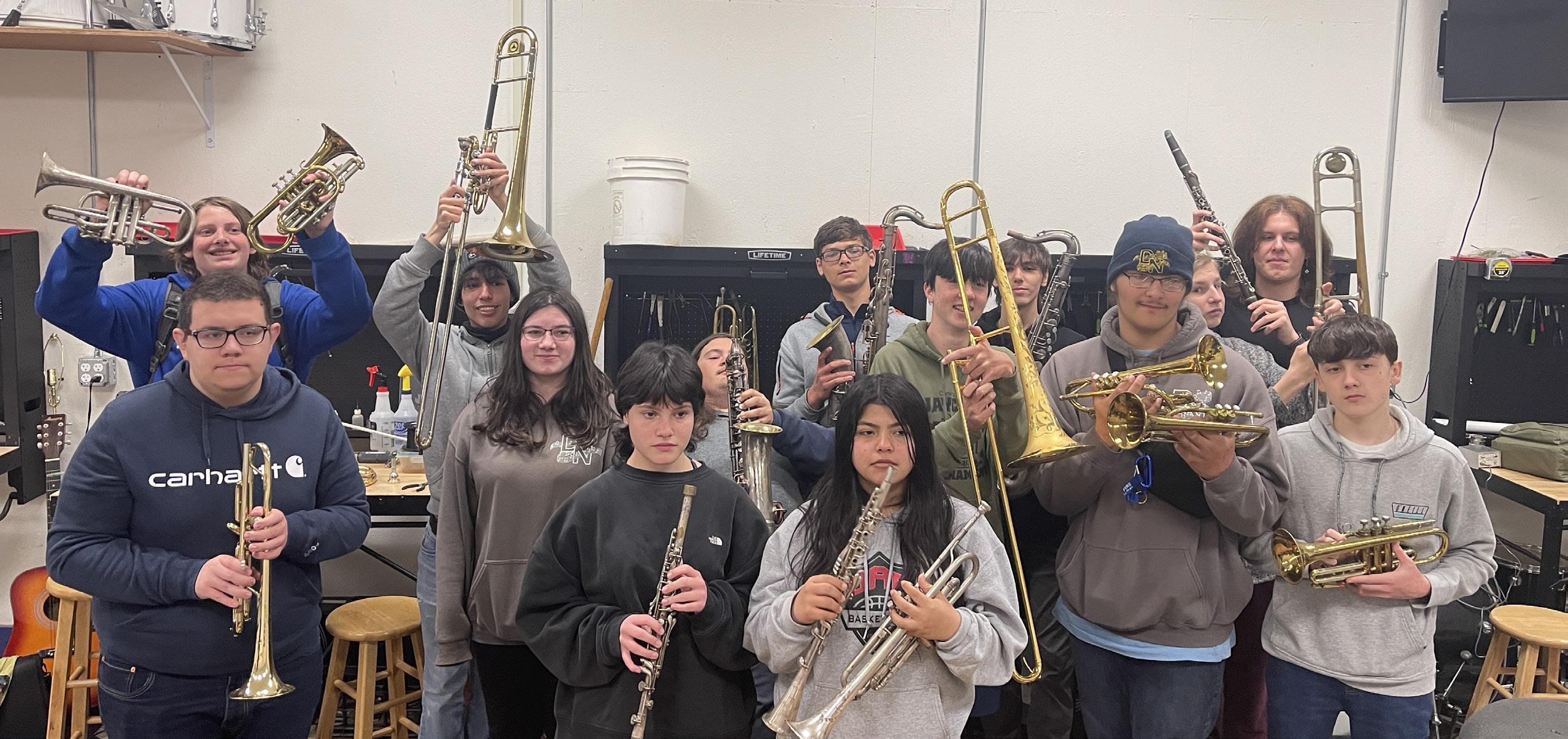
by Claudio Alcantar,

Hello, CMEA, I hope you are having a wonderful start to your school year!
My name is Claudio Alcantar and I have the honor of being your Urban Schools Representative. There is so much diversity in how our programs look, from traditional band, orchestra and choir programs, to modern band, music tech labs, mariachi groups and everything in between. Urban School music education programs have taken various shapes and forms in order to help meet the needs of our students.
As educators, we strive to help engage and enrich the lives of our students through music. For me, my students engage through traditional band and orchestra ensembles and they love it. But I also provide opportunities for them to play and perform jazz, pop, cumbia, compose, improvise, and use music technology along the way.
If you are an urban school teacher I would love to connect with you and learn about your program’s successes and struggles so that we can share that with other Urban teachers across our state. Together, I hope that we exchange ideas on how we engage with our students so that all students develop a passion and love for music. Email me at: c.alcantarbarrer@lausd.net
I have found the following foundations instrumental in helping me provide resources for my students, as funding tends to be a big challenge we face in urban schools:
• Save The Music Foundation
• Mr. Holland’s Opus Foundation
• Fender Play Foundation
• Urban Student Characteristics And Urban School Challenges: What High-Quality Education For Every Student Means (2024 Report) by National School Boards Association
• Enriching Spanish-Speaking English Learners’ Experiences in the English Music Classroom by Nabile Anahí Galván García
• 4 Tips for Incorporating Popular Music into Traditional Ensembles by Dr. Robert L. Bryant III
School of Music is ple as e d to announce and welcome new faculty.

Dr. Luis Orozco
Assistant Profe ssor of Music
With a Specialization In Voice and Opera

Dr. James Long
Director of Athletic Bands
Associate Director of Bands
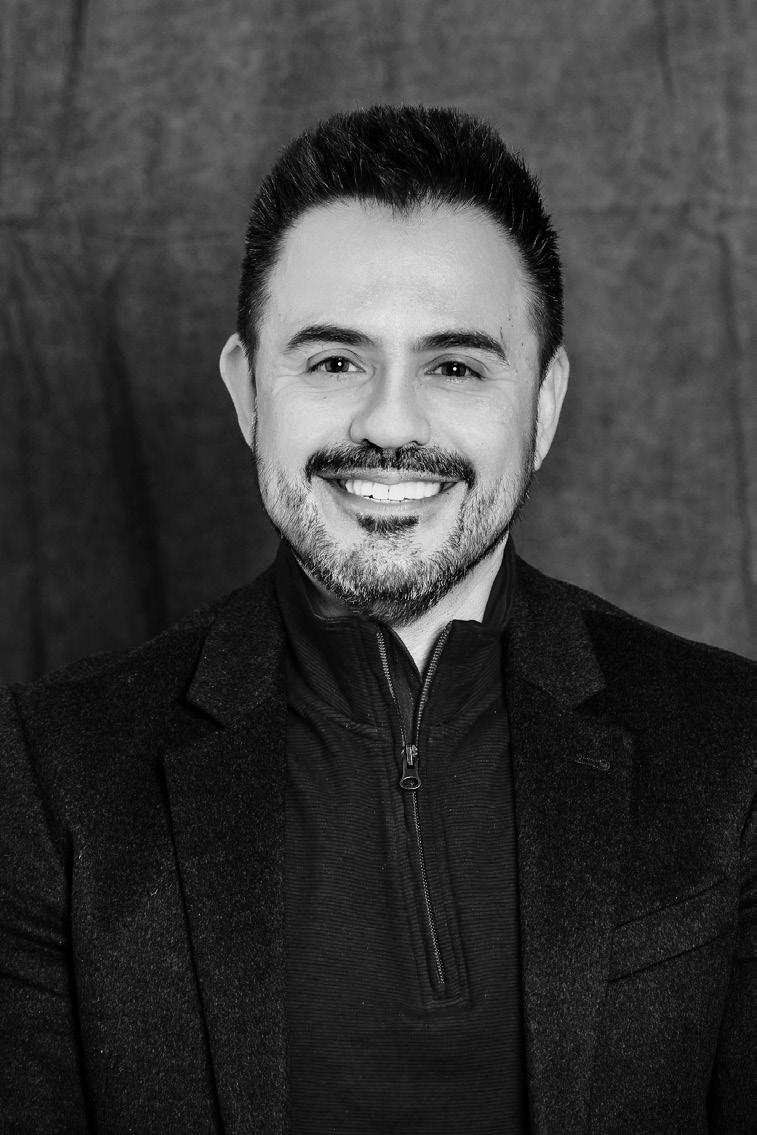
Director of Ethnomusicology
Located in the heart of Silicon Valley, SISU's School of Music is a recognized leader in the performing arts. Our curriculum includes degrees in performance, music education, composition, jazz studies, and audio technology. Our music education program produces some of California's leading educators, artists, scholars, and administrators, and our certified music teacher graduates are in particularly high demand.




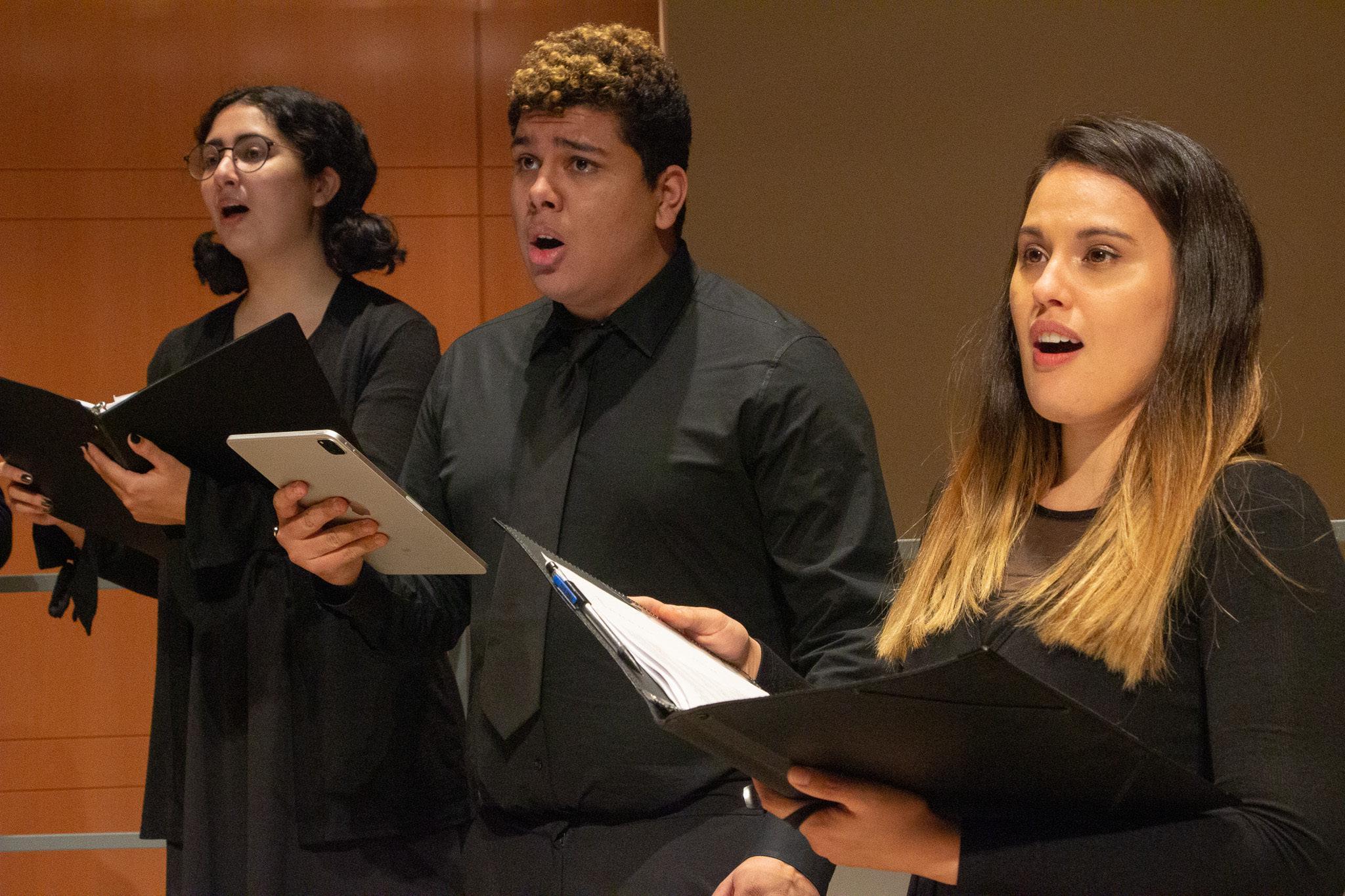




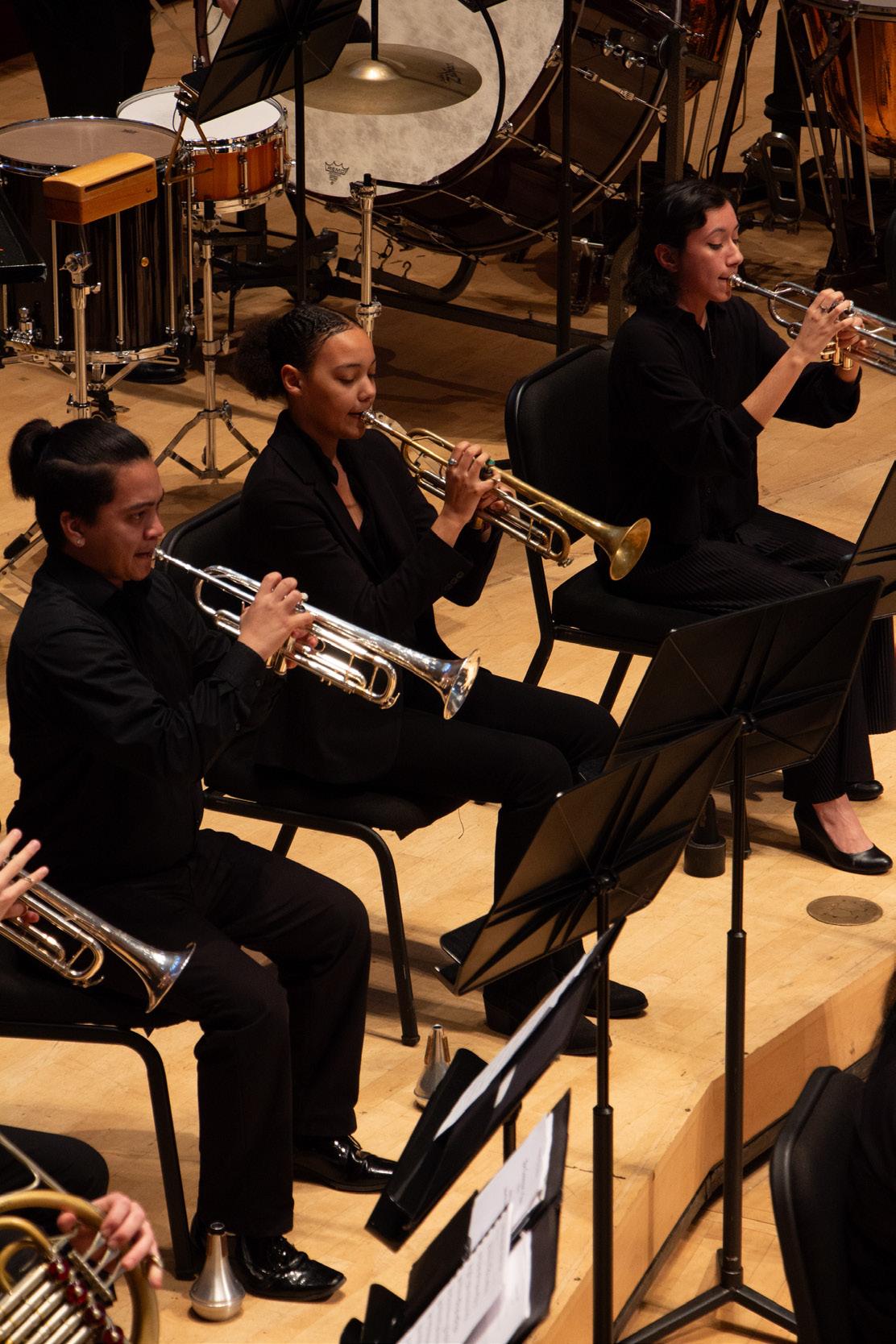

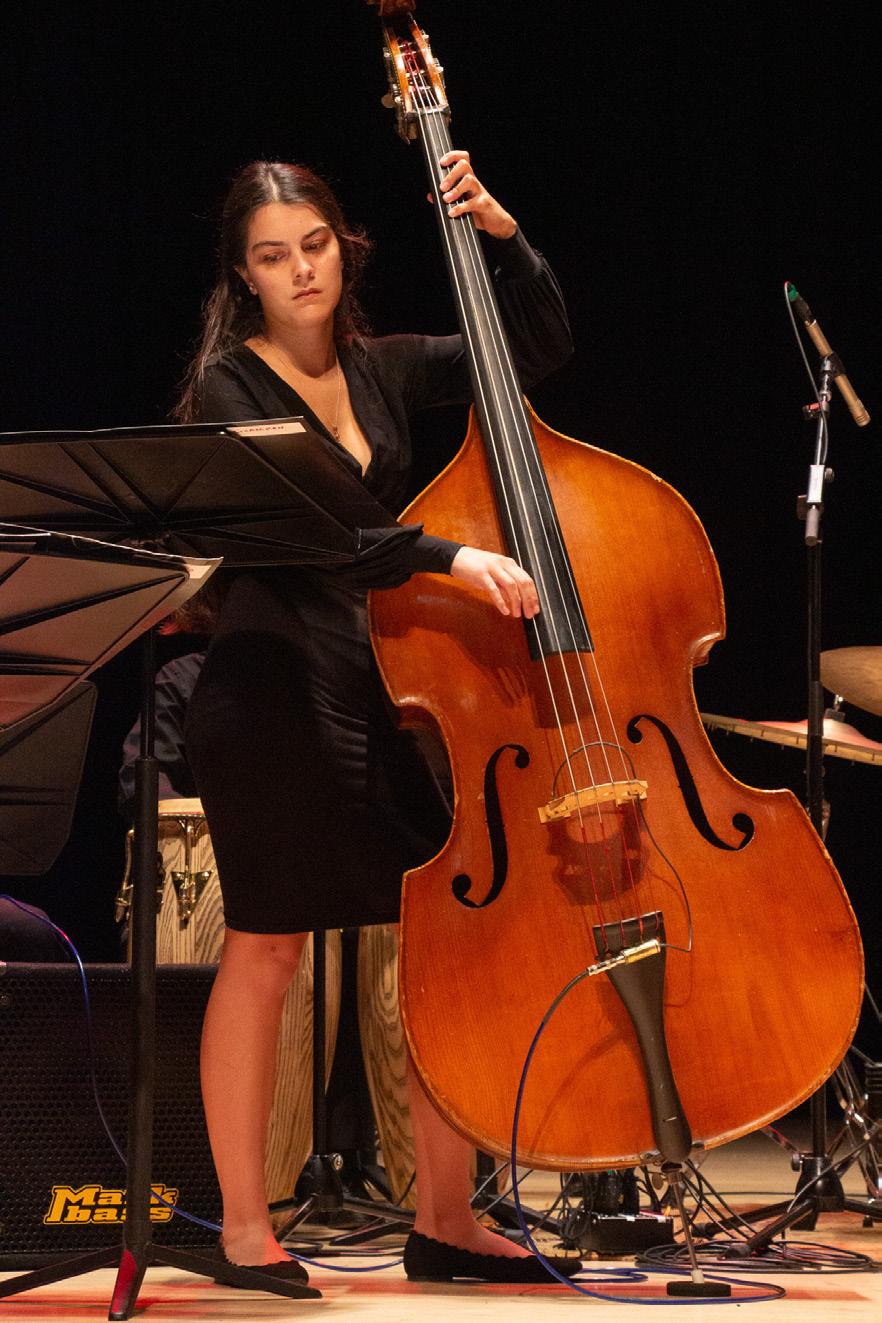

Accompanists available
Everyone who auditions is considered for a Music Scholarship music.sonoma.edu

by Jeremiah Jacks
Rural areas of California represent a vital aspect of our state, where we often find extreme diversity of income and culture. Perhaps not as much cultural diversity in one school alone, but when we consider California’s Rural Areas as a whole, there’s a lot more diversity than we realize. There’s also a lot more benefits and challenges unique to each of our situations. Even within my small school district here in Loomis, we have profound differences in each school setting.
So what I would like to start this year off with is YOUR stories. What is it like teaching in your school(s)? What do you teach? Why do you teach what you teach? What are your particular challenges that are tied to teaching in a rural area? What do you see as a benefit to teaching in a rural area? Why are you teaching where you teach? Tell me all about it! Before I can really represent our area, I need to know our stories!
Please email me at jeromejacks30@gmail.com
I will be hosting a discussion at CASMEC and will be relying on what you share to guide our discussions. I appreciate as many emails as I can get!


Welcome to the 2024-2025 school year! I am honored to serve as the CMEA Elementary Music TK-5/6 representative from 20242026. I hope we get a chance to meet each other and connect!
What comes to mind when you think of community? What does community look like in your elementary music classroom? These are just a few questions I have pondered as we approach the academic year. According to Merriam-Webster (2024), a community is a “unified body of individuals” or a “group of people with a common characteristic or interest within a larger society.” When thinking about community within our respective music classrooms, there are aspects of community we might consider: Do the people involved communicate honestly with each other? Are these people committed to accepting, supporting, and bearing with one another?
We can start building community in our music classroom by creating an environment that is welcoming and inclusive. This could begin with a focus on joy and positivity, where every student is greeted with a smile and encouragement. A positive attitude is contagious and can set the tone for the entire class, making the music room a space students look forward to entering.
We also know that acceptance is key. It is important that students feel they are not only seen but also accepted for who they are. This means we can take time to get to know our students and their parents or guardians. Taking the time to learn about their interests, backgrounds, and unique personalities allows us to tailor our teaching to meet their needs and help them feel welcomed and included in the class community.
We can also model and encourage building positive relationships within our music communities.
In our role as an elementary music educator, we can show our students how much we understand and appreciate them. We can encourage our students to share their thoughts and feelings, pausing and giving them the time they need to express themselves fully. One strategy might be restating their questions or comments by saying, “What I am hearing you ask is…” showing that you are actively listening and value their input.
Modeling risk-taking is another important aspect of relationship-building. When our students see us try new things and embrace challenges, they learn that it is okay to make mistakes and that growth comes from stepping out of their comfort zones. This encourages them to take risks in their learning without fear of judgment.
We also are keenly aware of the importance of creating a safe environment, which goes beyond the physical layout of the classroom. Our students’ emotional safety is just as critical. Our students should feel comfortable approaching us with their concerns without fear of judgment. If we can establish consistency in our routines and expectations, that can help build confidence and trust, as students know what to expect and feel secure in that structure.
To foster a sense of community, we can incorporate community-building activities that promote teamwork and collaboration. Community-building games are also excellent for building camaraderie and help create a joyful and positive learning environment. These activities not only engage our students but also help them develop social skills and build stronger connections with their peers. Here are some of my favorite community-building activities to start the school year:
One of my favorite name games is Up the Ladder. Below you will find an example:
Another great activity is Ba-Da Bingo!, which I have used with groups as young as elementary to adults. I place questions or actions within each square, and the point is to ask other people in the class/ group to answer and/or perform those actions. The goal is to mark as many squares on your Bingo card, with as many different names, as possible. You can create your Ba-Da Bingo! card on any number of free websites; however, I tend to use https://myfreebingocards. com/bingo-card-generator. Below are some examples of a Ba-Da Bingo! cards:


Another great way to include and engage every student in your classroom is to find yourself a ball of yarn! Let me explain - with everyone sitting in a circle, gently roll the ball of yarn (keeping hold of one end) to another person in the circle. When they “catch” the ball of yarn, it is their opportunity to share. Perhaps they share their favorite food, book, movie, candy, or sports team. We can also use this activity to review students’ names!

Using food partner cards has been a recent new favorite way of building community. Depending on the age level of your students, you can utilize these cards in order for students to share, build relationships, find partners, and so much more! For example, at the beginning of the school year, we might use these cards for students to share a bit about themselves. Some of those questions might include:
1. Describe yourself in three words.
2. What is something that makes you smile?
3. If you could have a superpower, what would it be?

I recently purchased these cards and they have been a huge success!
As we embark on the new school year, let’s remember that building a strong, supportive community in our elementary music classrooms is not just about teaching music—it is about fostering a space where every student feels valued, accepted, and connected. By creating an atmosphere of joy, modeling positive relationships, ensuring safety, and engaging in community-building activities, we can transform our music classrooms into places where students learn and thrive. Lastly, I would love to hear from you! My email is jlgee@sdsu.edu
Allen, T. (2000). Creating community in your classroom. The Education Digest, 65(7), 23-27.
Merriam-Webster. (n.d.). Community definition & meaning Merriam-Webster. https://www.merriam-webster.com/ dictionary/community

by Dennis Feinland
CMEA Secondary Music 6-12 Representative
Teaching is often described as both an art and a science, requiring a delicate balance between imparting knowledge and fostering an environment conducive to learning. At the heart of effective teaching lies a crucial element that is sometimes overlooked: authenticity. When teachers bring their true selves into the classroom, they create an environment that facilitates learning while nurturing students’ growth and well-being. As teachers, we are often told to create a community within our classrooms in which students can be themselves; as teachers, we must remember to model that behavior as well. Here’s why being yourself as a teacher can profoundly impact students and enrich their educational experience.
Authenticity in teaching starts with building genuine relationships, which may not always perfectly reflect what you have been taught a student-teacher relationship should look like. When teachers are authentic, they convey a sense of trustworthiness and reliability. Students are more likely to engage in learning when they feel that their teachers are sincere and approachable. An authentic teacher shows vulnerability, admits when they don’t know something, and shares their own learning experiences. This honesty helps students feel more comfortable expressing their own uncertainties and asking questions. Picture it: if you’re willing to go out on a limb and improvise in front of the whole ensemble first, wouldn’t your students be more likely to do so as well?
Furthermore, authentic teachers create an environment where students feel valued and understood. By being themselves, teachers model emotional intelligence and interpersonal skills, demonstrating how to interact with others in a respectful and genuine manner. Now more than ever (as a great number of students appear to struggle with social skills due to being quarantined during formative years), this modeling can inspire students to develop their own authentic selves and cultivate meaningful relationships both inside and outside the classroom.
When teachers are authentic, their passion for the subject matter becomes apparent. This enthusiasm is contagious and can significantly boost student engagement. An authentic teacher who genuinely cares about their subject and their students’ success brings a unique energy into the classroom. This energy can make lessons more compelling and relatable, fostering a deeper connection with the material.
That being said, letting your true enthusiasm shine through may be a double-edged sword. When a teacher is openly not passionate about the subject matter, such authenticity may rub off on the students in a way that is detrimental to their learning. Especially if a highly influential student begins to become apathetic (i.e., a section leader or drum major), rehearsals can become less productive, performances may feel less rewarding, and you might find yourself doing a lot more classroom management than before.
If you find yourself in this situation, feel free to incorporate your own interests and personal experiences into your teaching. Without being too self-centered, personalization might not only make lessons more interesting but it could also help students see real-world applications of what they are learning. For example, a music teacher with a passion for cats might integrate cute feline imagery and stories about their own pets into their curriculum, making the subject more relevant and stimulating for students.
A classroom where teachers are true to themselves can often be a safer space for students. Authenticity fosters an inclusive environment where diversity is celebrated and differences are respected. When teachers express their own identities and experiences, they validate the identities of their students. This validation is crucial in helping students feel seen and heard, particularly for those who may come from marginalized or underrepresented backgrounds.
By embracing their own unique qualities and experiences, teachers encourage students to do the same. This not only boosts self-esteem but also promotes a sense of belonging. Students who feel accepted are more likely to think critically about what they are doing, participate actively in class, and develop a positive attitude towards learning.
Authentic teaching involves a commitment to personal growth and continuous learning. Teachers who are true to themselves are often those who reflect on their practices, seek feedback, and are open to new ideas. This mindset is beneficial for students, who learn not only from the content being taught but also from observing their teacher’s approach to learning and growth.
When students see their teachers embracing new challenges, adapting to feedback, and pursuing their own interests, they learn the value of lifelong learning. This can inspire them to adopt a
similar attitude towards their education and personal development. An authentic teacher’s example can encourage students to set goals, tackle obstacles with resilience, and view learning as an ongoing journey rather than a destination. Especially if their teacher is able to demonstrate how they continue to engage with music in their personal life, students may be more likely to continue playing after high school.
Authenticity in teaching often involves challenging students to think critically and independently. Authentic teachers are not just conveyors of information but facilitators of learning. They encourage students to question, analyze, and form their own opinions. This approach fosters a classroom environment where students are empowered to take ownership of their learning instead of demanding to be spoon-fed every little thing during class time. By being themselves and sharing their own thought processes, teachers can model critical thinking skills. They demonstrate how to approach problems, consider different perspectives, and make informed decisions. This modeling helps students develop these essential skills, preparing them for future academic and personal challenges.
Being yourself as a teacher is not merely a personal choice but a powerful educational strategy. Authenticity fosters trust, enhances engagement, promotes inclusivity, and encourages lifelong learning. As we start a new year, let us bring our true selves into the classroom, create an environment where students feel valued, inspired, and motivated to learn. In this way, authenticity is not just a trait but a transformative tool that can profoundly impact students’ educational experiences and personal growth. In a world where genuine connections are increasingly rare, the authentic teacher stands out as a beacon of inspiration and a catalyst for positive change.
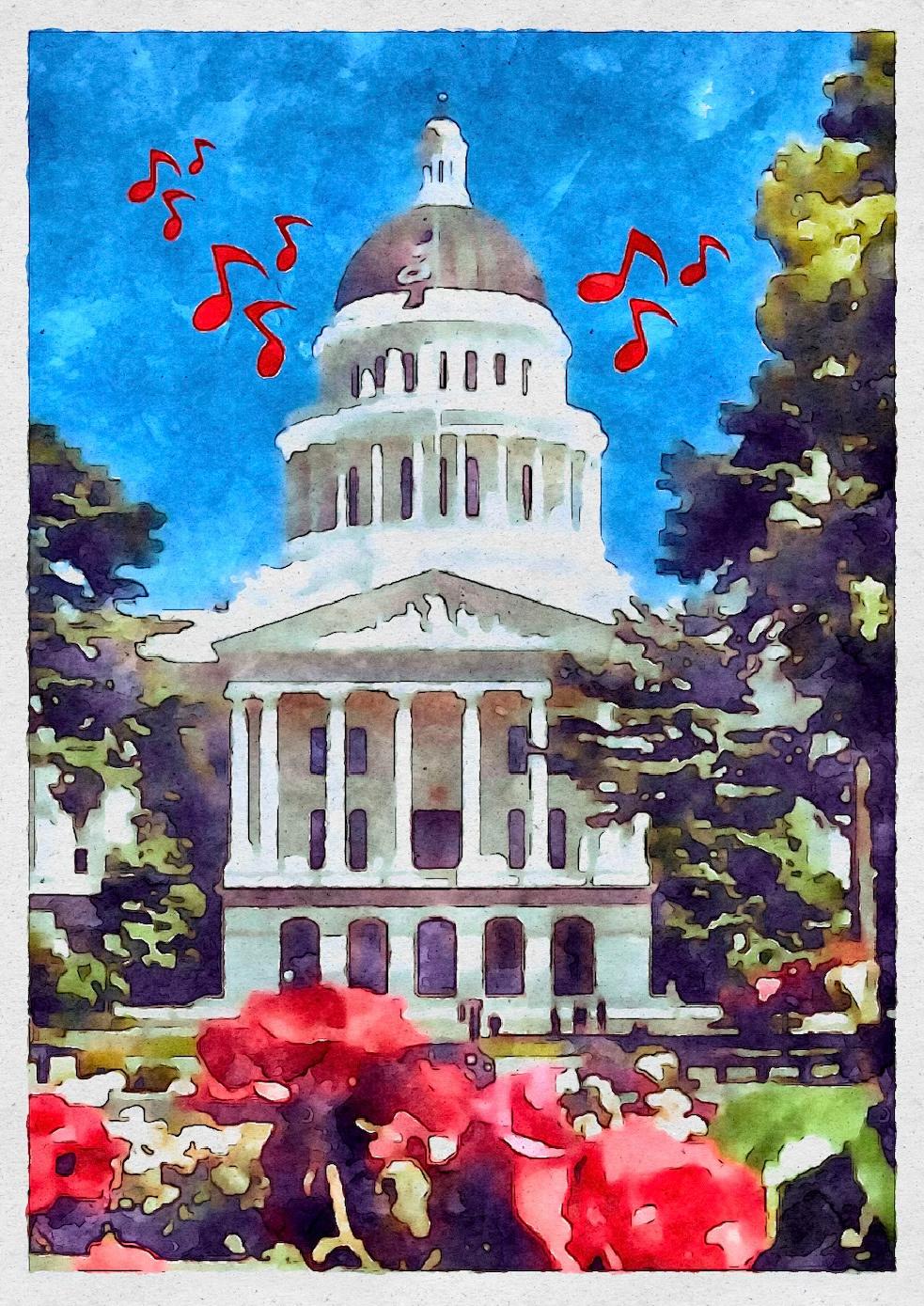
SATURDAY FEBRUARY 8, 2025
BAND MEMBERS MUST BE YOUNGER THAN 22 (OR ENROLLED IN A MINIMUM OF 6 COLLEGE CREDITS)
THE BAND PERFORMS IN ONE OR MORE OF THE STYLES DESCRIBED IN THE “STYLE GUIDE” (ON THE TRADITIONAL JAZZ EDUCATORS NETWORK WEB SITE)
4 TO 9 MUSICIANS PERFORM AT A TIME (UP TO 12 FOR BRASS BANDS WITH A MAX OF 7 HORNS)
$150 BAND REGISTRATION FEE INCLUDES:
ALL-EVENTS FESTIVAL ACCESS FOR DIRECTORS AND INDIVIDUAL BAND MEMBERS
ADJUDICATED PERFORMANCES (PIANO, BASS/GUITAR AMPS AND DRUMS/CYMBALS PROVIDED)
RECORDED FEEDBACK
ONSTAGE FEEDBACK CLINIC BASED ON PERFORMANCE (PIANO, AMPS AND DRUMS PROVIDED)
ADMISSION AND PIZZA LUNCH FOR BAND DIRECTORS AND STUDENTS TO THE NOONTIME JAZZ ‘N’ PIZZA MENTORED JAM CLOSING CONCERT FEATURING MULTI-INSTRUMENTALIST
GUNHILD CARLING & THE ALL-STAR CLINICIANS BAND SHOWCASE OF ENCORE PERFORMANCES AND AWARDS GROUP BAND PHOTOS AVAILABLE FOR PURCHASE REGISTRATION OPEN UNTIL DEC. 31
(LATE REGISTRATION UNTIL JAN 10 AS SPACE IS AVAILABLE)
REGISTER YOUR BAND AT WWW.TEAGARDENJAZZFESTIVAL.ORG
FOLLOW US ON FACEBOOK & YOUTUBE




Hello Retired Members! It’s time to ZOOM and stay connected! Let’s do this! As a result of conversations in previous Zoom meetings with Retired Members, in addition to ideas shared at our 2024 CASMEC luncheon on how best to be a resource to our active colleagues, I’d like to solicit your input on the best way our retired members can support the Mentorship Program, new teachers, or veteran teachers tasked with a new curriculum, and our collegiate members as they navigate the student teacher, and/or employment waters; we can even assist teachers that are circling, and planning their own retirement.
Let’s brainstorm and discuss on Monday, October 7, at 5:00 pm via Zoom! Please fill out and submit this google form by October 5; I will send you a Zoom link prior to the meeting.
I’m looking forward to connecting, and collaborating with you, once again!
- Rita Zigas-Brown CMEA Retired Members Representative

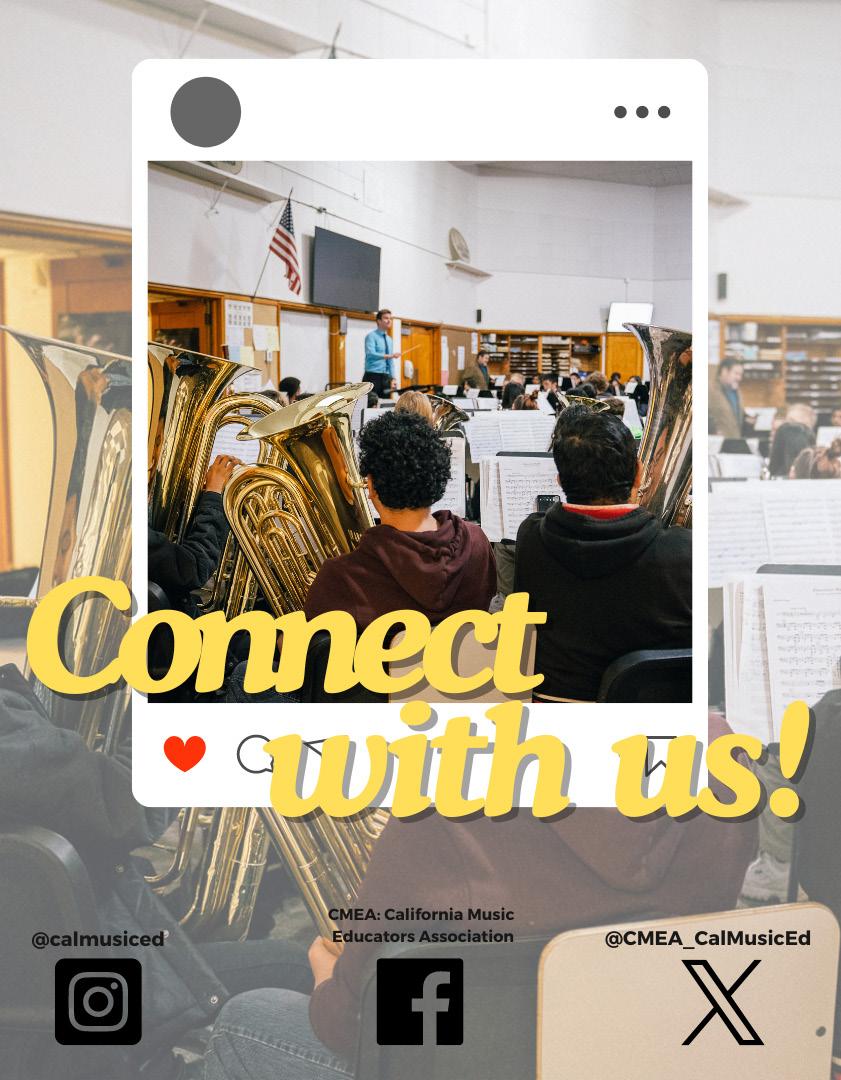

Kick off the school year with NAfME Collegiate Kickoff Week! https://nafme.org/event/2024-collegiate-kickoff-week/
The NAfME Collegiate Advisory Council has planned a week-long event to celebrate collegiate chapters. Each day chapters can plan activities around the day’s theme and participate in a social media promotion event. You can choose to participate in one or all the days. Missed the dates? No problem, use the list of themes to jump start your chapter’s activities. Most importantly, have fun while building community, both locally and with each other.
• September 16: Service Monday
• September 17: Musical Tuesday
• September 18: Advocacy Wednesday
• September 19: Professional Development Thursday
• September 20: Chapter Recruitment Friday
POST using #NAfMECollegiate and each day’s respective hashtag!
• #ServiceMonday
• #MusicalTuesday
• #AdvocacyWednesday
• #ProfessionalDevelopmentThursday
• #ChapterRecruitmentFriday
TAG @NAfME and @NAfMECollegiateOfficial on Instagram and Facebook! Note: use @cNAfME for Facebook tagging
We in the Collegiate Council are excited to kick off another great year of sharing music, learning together and creating community.
The 2024-2025 CMEA Collegiate Council consists of university music education students that represent several CMEA sections across California. Our membership includes students from San Diego State University, CSU Northridge, CSU Bakersfield and San José State University. We are happy to welcome several new members and welcome back our returning members. Complementary to the CMEA vision, the Collegiate Council holds monthly meetings to network, discuss how to build a greater collegiate support system and plan three sessions to be presented at CASMEC early next year. We would also like to warmly welcome our advisor, Dr. Michelle McConkey of Chico State University, who will work with us to turn our collective visions into actions.
For updates about collegiate council activities, visit our instagram @collegiatecouncil and feel free to contact us at collegiatecouncil@calmusiced.com. We wish everyone a wonderful year!


January 15 – January 19, 2025, Sacramento, CA
Deadline for Submission: October 31, 2024
Notification of Acceptance: November 22, 2024
The California Music Education Association is seeking abstracts of exciting research papers and projects that inspire new ideas and build our collective knowledge base. We feature both new, unpublished research and creative projects in the form of full research projects, capstone projects, student research papers, literature reviews, and action research. Research submissions should comply with the Code of Ethics and Standards for Submission (found in the Journal of Research in Music Education.)
We encourage submissions by:
• undergraduate and graduate students
• college/university faculty, preK-12 teachers, and
• independent researchers. Research on any topic related to music teaching and learning
Submission Format:
• In abstract form (approximately 150 - 200 words) with a title, research question/ objectives or project objectives, methodology, results (or preliminary results), and potential implications for music educators.
• A reference list in APA format
• All materials will be submitted through the following Google Form: https://forms.gle/HazFPXrtDP3MSKPq8
Any Questions? Please contact Dr. Karen Koner at kkoner@sdsu.edu
We look forward to a collegial sharing session of knowledge at CASMEC 2025!
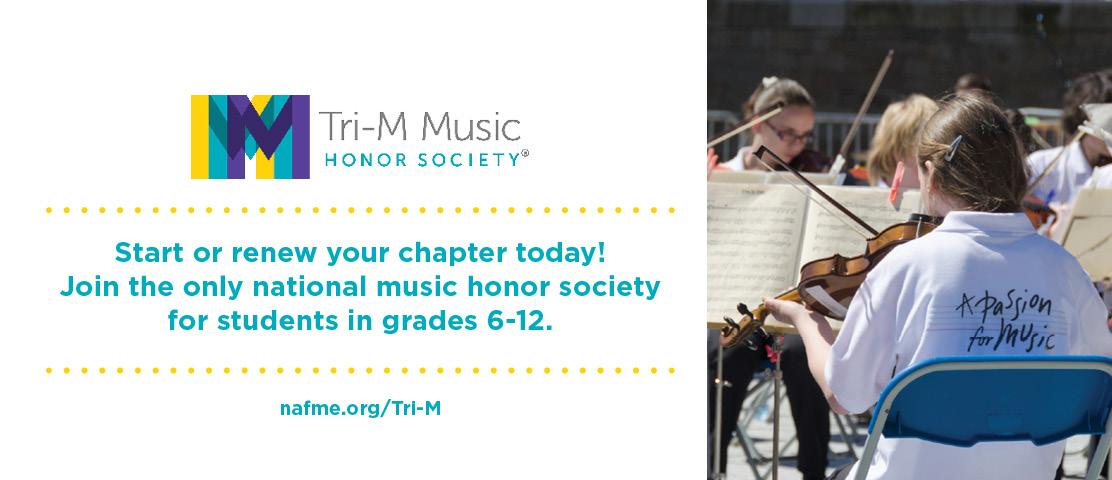
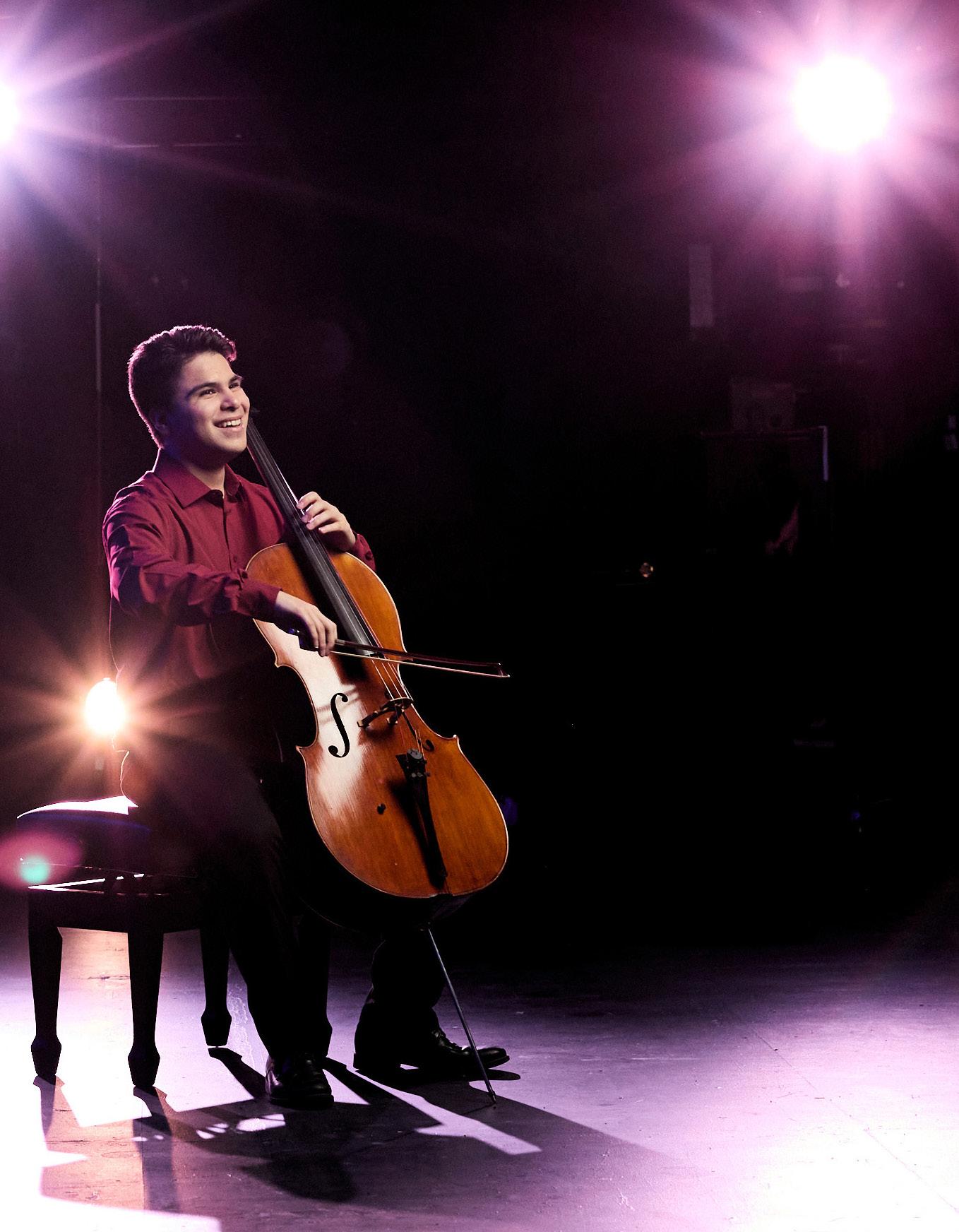


It’s time to renew your CODA Membership! Become a member today (2024-25 memberships began on July 1st) and help take an active role in supporting students, educators, and school orchestra programs across the state of California.
Click here to view membership class information and here to join the organization or renew your membership.
This year’s CODA December Honor Orchestra will take place at Santa Monica High School on Dec 6-7, 2024. This event will feature student musicians from across the state with the CODA Honor Symphony Orchestra (conducted by Elias Brown) and the CODA Honor String Orchestra (conducted by Lucy Lewis). This opportunity is open to high school students enrolled in their school’s band or orchestra program.
Recording and submission instructions for directors and students can be found here CODA Honor Orchestra audition materials are due online on October 15th, 2024. Please encourage your students to apply!
CASMEC 2025 will run from January 15-19 in Sacramento, CA. All State Orchestra audition materials are due on October 15 for High School, and November 2 for Junior High School.
CODA will offer four all-state honor orchestras at the 2025 CASMEC Conference:
• CODA All-State High School Symphony Orchestra (William Eddins, conductor)
• CODA All-State High School String Orchestra (Jacob Sustaita, conductor)
• CODA All-State Junior High School String Orchestra (Tammy Yi, conductor)
• CODA All-State Junior High School Concert Orchestra (Rachel Dirks, conductor)
Learn more and find audition materials at these links for High School All-State and Junior High All State!
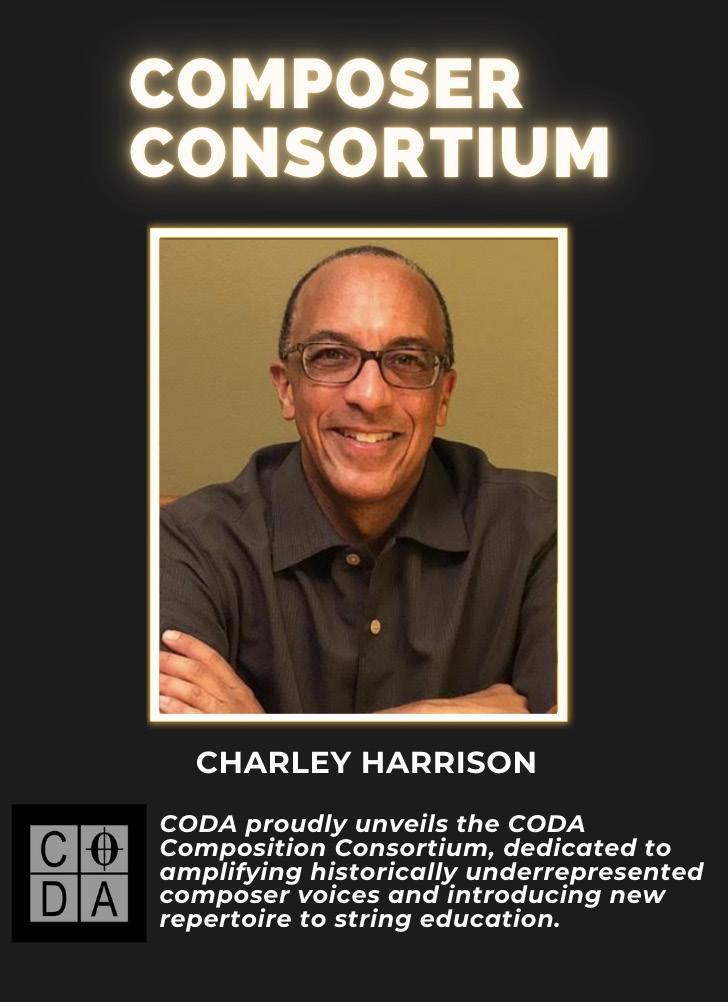
CODA is proud to launch the CODA Composition Consortium that aims to highlight historically underrepresented composer voices, to bring new repertoire to the string education field. Through this project, CODA will commission a string orchestra piece (Grade 3) to be premiered at the California All State Music Education Conference (CASMEC) in 2025 by the All State Junior High School String Orchestra. The composer will collaborate directly with All-State students during CASMEC, and consortium members will have the opportunity to engage with the composer at the conference and see the rehearsal process. Orchestra directors in California and beyond can join the consortium through a $150 buy-in, which includes access to score and parts by CASMEC 2025, the rights to perform the piece following the conference. Consortium members will also have their name (program & director) listed in the score.
For its first iteration, CODA is excited to partner with composer Charley Harrison for its inaugural commission at CASMEC 2025. This composition will include components of jazz, written for the Grade 3 String Orchestra setting.
Learn more about Charley Harrison, and become a Consortium Member today!
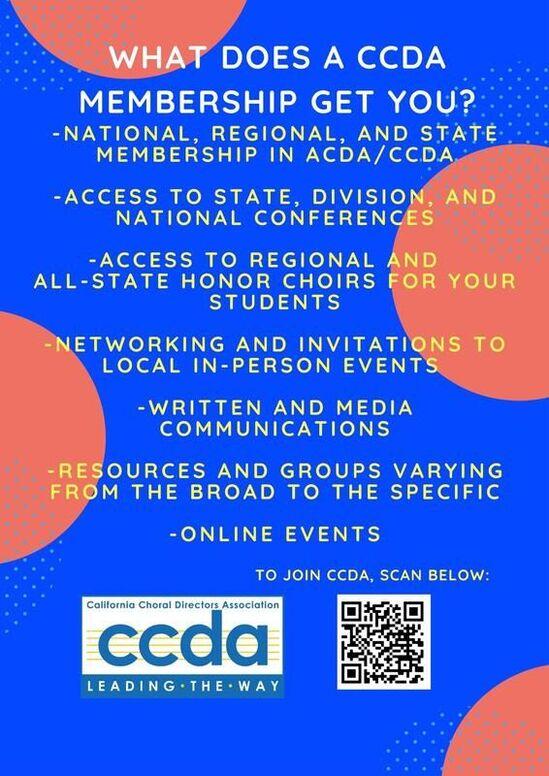
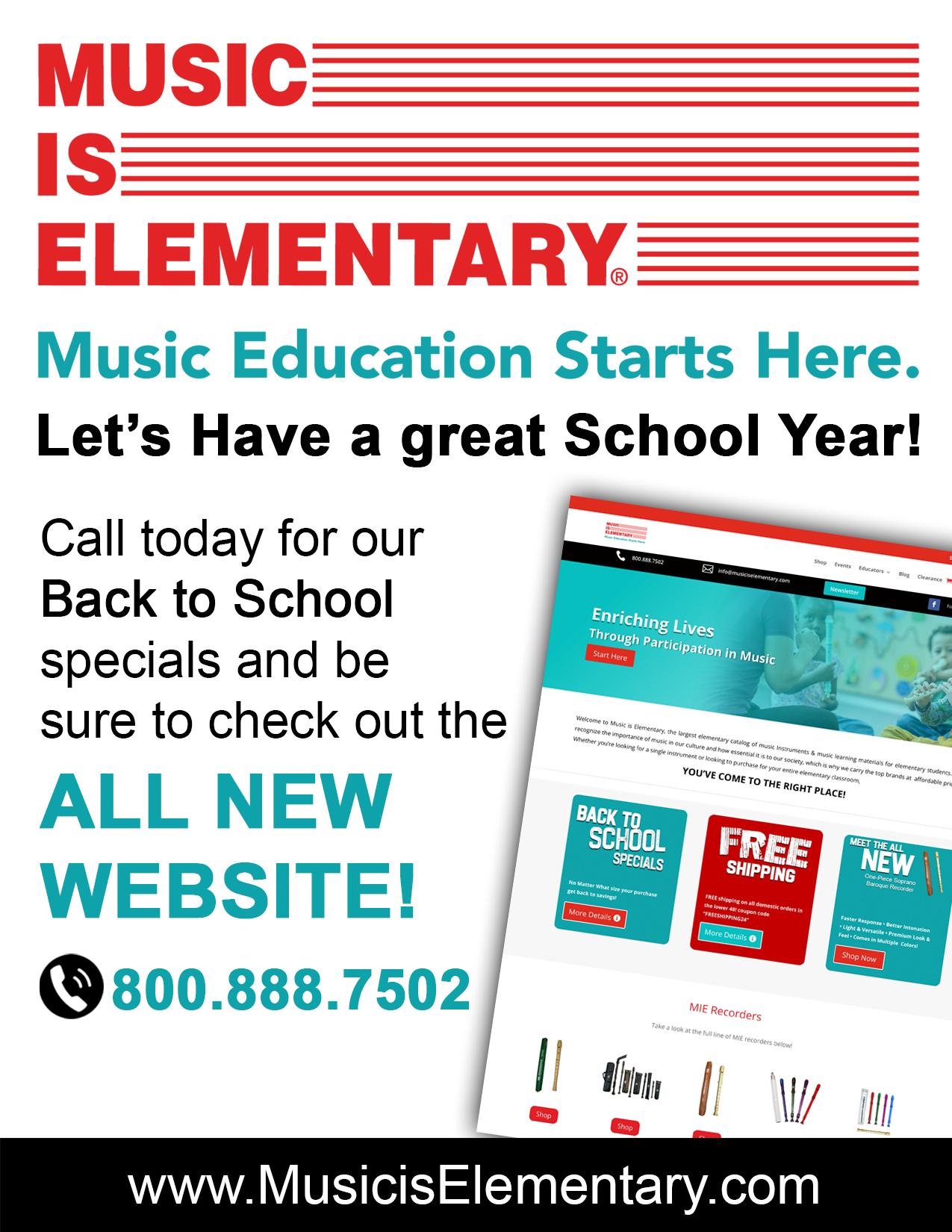

by David Green
CBDA Director of Communication

When I have spoken about the music education landscape in California regarding our professional music organizations with people unfamiliar with our state, I have often needed clarification when trying to list the myriad of professional music education organizations that exist in our state. Explaining the different roles that CBDA, CMEA, CODA, ACDA, CAJ, and the like is often a confusing proposition. “You mean you don’t all fall under the same umbrella?” is often the question that is asked the most, followed by the the second question: “Why?” The answers get tricky and often involve giving a history lesson on the various professional organizations. Each group has its own “place” at the table, as it were, in the grand scheme of music education in California. We each bring a different perspective on how we can serve both music educators and students, all with slightly different focuses and viewpoints, all while collaborating to enhance, promote, and advocate music education in our state. In many ways, the expression “Diversity is our Strength” is emblematic of the professional music education landscape in California.
Since the formation of CASMEC in 2010, it has served as a model of excellence in music education, fostering a community where innovation, shared resources, and mutual support thrive. This collaboration not only enhances the educational experiences of students across the state but also elevates the professional standards for music educators, creating a ripple effect that benefits the entire music community.
This spirit of collaboration and partnership set the stage for this year’s All-State Super Saturday, held on September 7th this year at six locations across the state. Originally started by CBDA in 2023, CBDA and CODA partnered together to expand access across the state to offer string masterclass sessions to potential all-state auditioners. This type of collaboration would have been unthinkable fourteen years ago in a pre-CASMEC world, but now it serves as a shining example of how we are better together, not separate.
The effectiveness of the All-State Super Saturday event is significantly amplified through strategic partnerships with various regional music education organizations across California:
• Southern California School Band & Orchestra Association (SCSBOA): Their involvement ensures that students from Southern California have ample opportunities to
participate, bringing their unique regional flair to the statewide event.
• California Music Educators Association (CMEA) North Coast Section: By partnering with CMEA’s North Coast Section, the program extends its reach to the northern coastal areas, providing specialized support and resources tailored to this region’s needs.
• Northern California Band Association (NCBA): NCBA’s collaboration is pivotal for integrating the northern regions into the fold, ensuring that students from these areas are not only included but also have access to the same highcaliber educational experiences.
• Northern California Band & Choral Directors Association (NCBCDA): NCBCDA’s partnership enriches the program by focusing on both band and choral music, promoting a comprehensive approach to music education that values all musical disciplines equally.
These partnerships go beyond logistics, embodying a collective dedication to statewide music education. They facilitate a seamless educational network, amplify individual efforts, and foster a community spirit, ensuring inclusivity and success in events like Super Saturday across California.
The music education landscape in California is a vibrant mosaic, where each organization plays a distinct yet interconnected role. The collaboration exemplified by CASMEC and events like All-State Super Saturday not only highlights the power of unity but also showcases how diversity in approach enriches the educational experience. These partnerships and collaborative efforts are not merely about coordinating events; they represent a profound commitment to fostering a culture of excellence, innovation, and inclusivity in music education. As we move forward, this model of cooperation continues to inspire and set a standard for how educational communities can work together to elevate the arts, ensuring that every student in California has access to transformative musical experiences. Through these collective endeavors, we are not just educating musicians; we are cultivating a future where the arts thrive, supported by a strong, united community of educators and advocates.





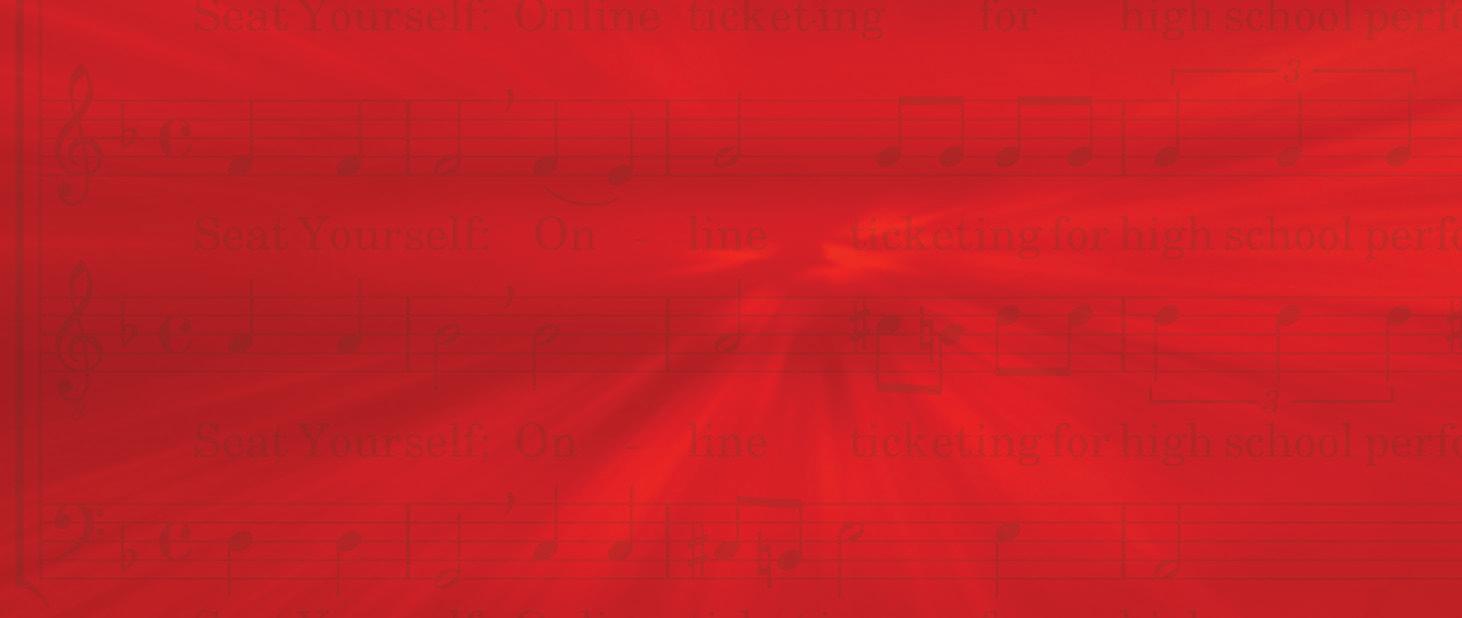







My name is Daniel Crispino and I am the new teacher’s representative for CMEA. I am currently a first-year teacher teaching at Red Bluff High School in Northern California. I teach guitar, mariachi, concert, marching, and jazz band. As a first-year teacher, there is so much to learn and navigate while having to plan multiple classes for the day. There are so many questions to ask and situations to think about.
I know many new teachers are going through similar experiences as me. As the new teacher representative, I’d like to connect with new teachers and find ways that we can help each other through the year. I’d be happy to host online sessions for a group of us to meet and talk about our experiences. If there’s anything that I can do to support you as you continue your journey in teaching, please let me know.
If you’d like to connect my email is dcrispino@rbhsd.org. Have a wonderful year!
- Daniel Crispino
CMEA New Teacher Representative





by Jack Aron,


















My name is Jack Aron and I am the new CMEA Music Education through Technology Representative. As this is my first blurb in the magazine, I thought it might be appropriate to share several (free) resources that have guided me throughout my career, and benefited my students along the way!





If you are going to be facilitating any type of music production program, especially CTE, these websites have become essential to my curriculum:









• For music theory: https://musictheory.pugetsound.edu/ mt21c/MusicTheory.html

• For music production (Ableton): https://learningmusic. ableton.com/index.html









• For digital audio sampling: https:// chrome.google.com/webstore/detail/sample/ kpkcennohgffjdgaelocingbmkjnpjgc?hl=en-U S




• Vocal Remover/Isolator: https://vocalremover.org






• Audio to MIDI converter: https://www.conversion-tool. com/audiotomidi/



And as an added bonus, the MIDI files (and sheet music) to every Nintendo game ever: https://www.ninsheetmusic.org
If you have any questions about pursuing music education through technology (in any shape or form), do not hesitate to contact me at jaron96@gmail.com!













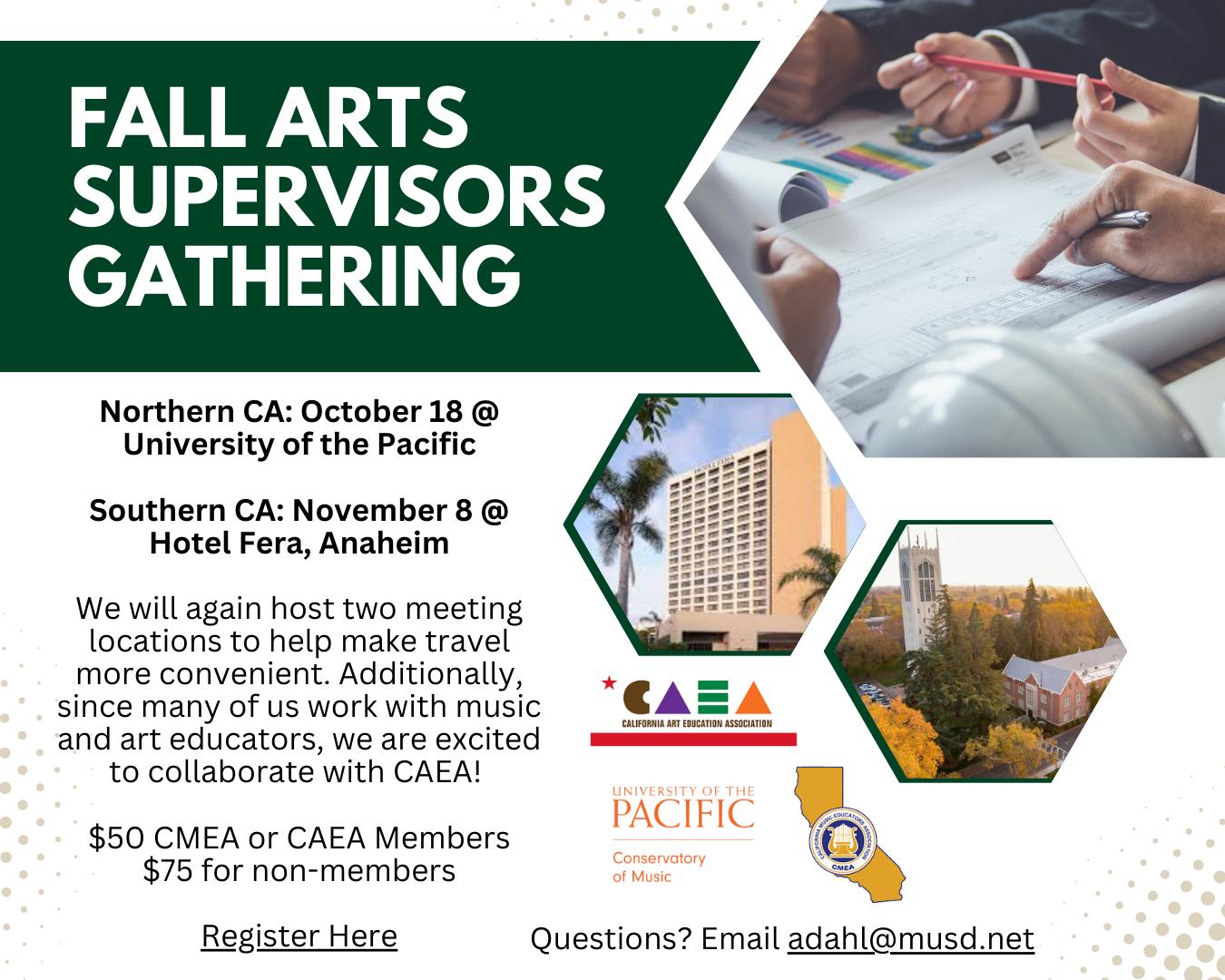

CMEA holds an annual Professional Learning Day for Supervisors each fall. This is a time for VAPA administrators, supervisors, coordinators, TOSAs, and other school arts leaders to come together and discuss issues specific to our jobs. This year we are excited to co-sponsor this event with the California Art Education Association. Since many of our supervisors also work with other areas of the visual and performing arts, this will be a mutually beneficial collaboration.




















































